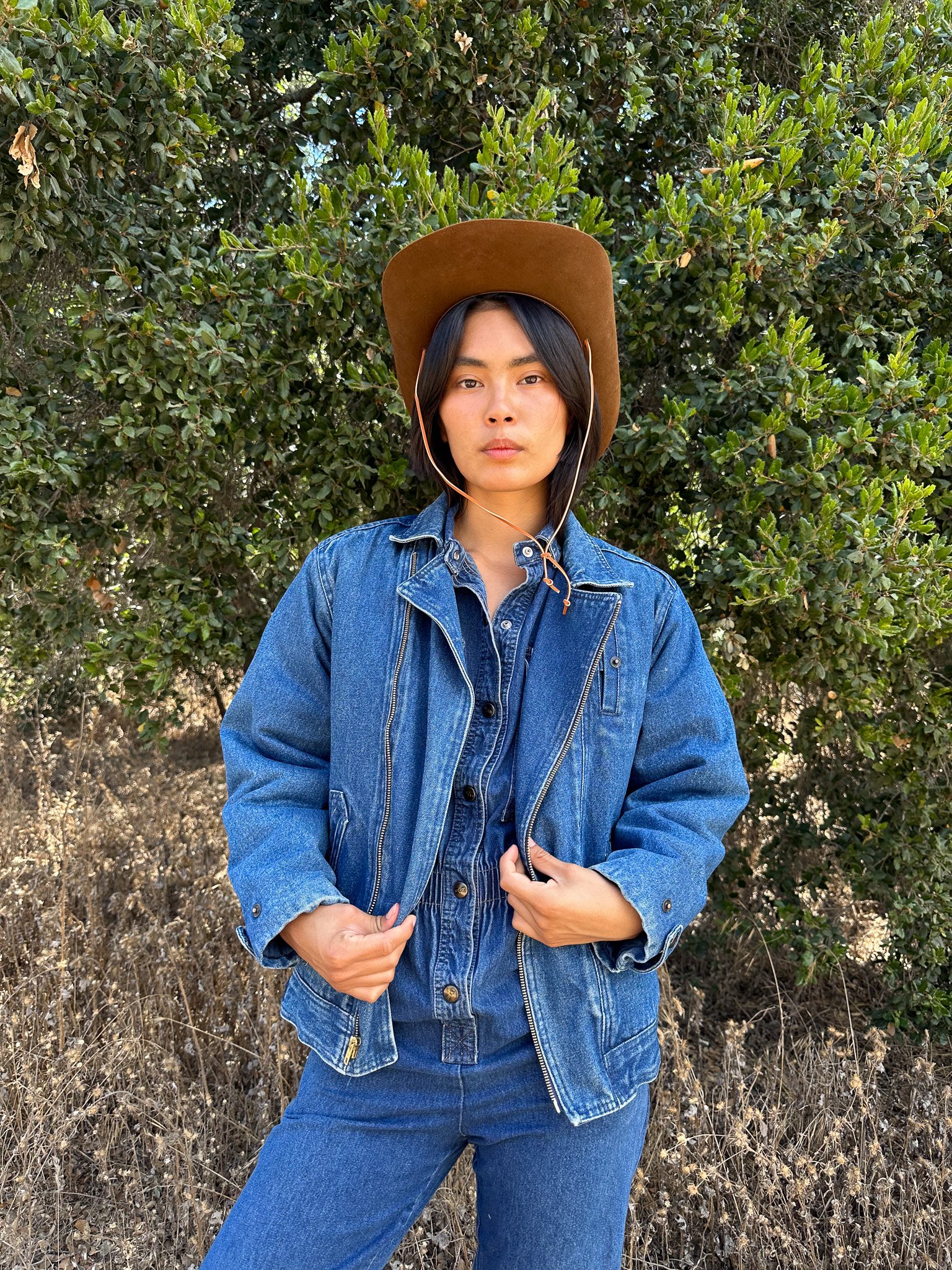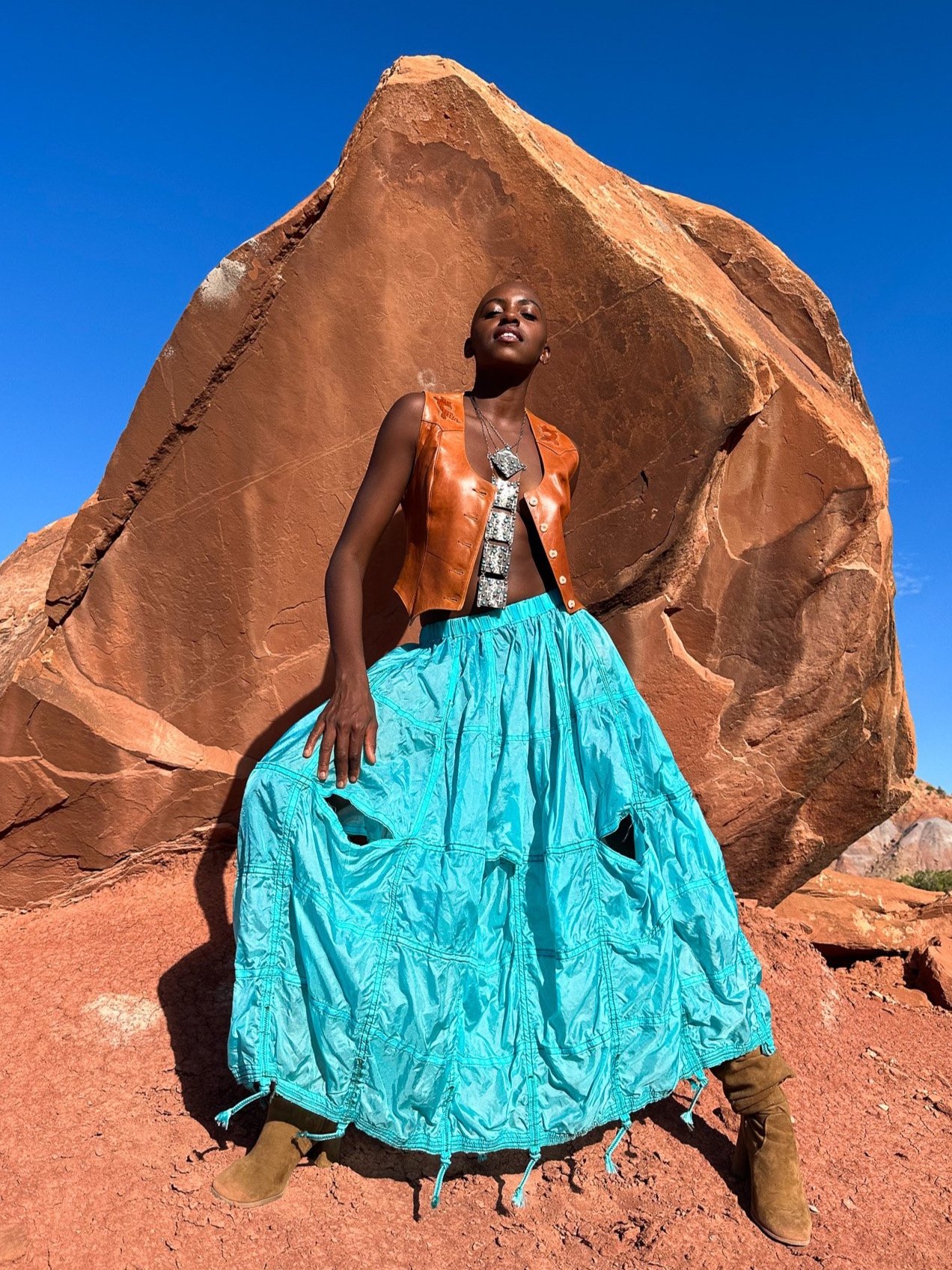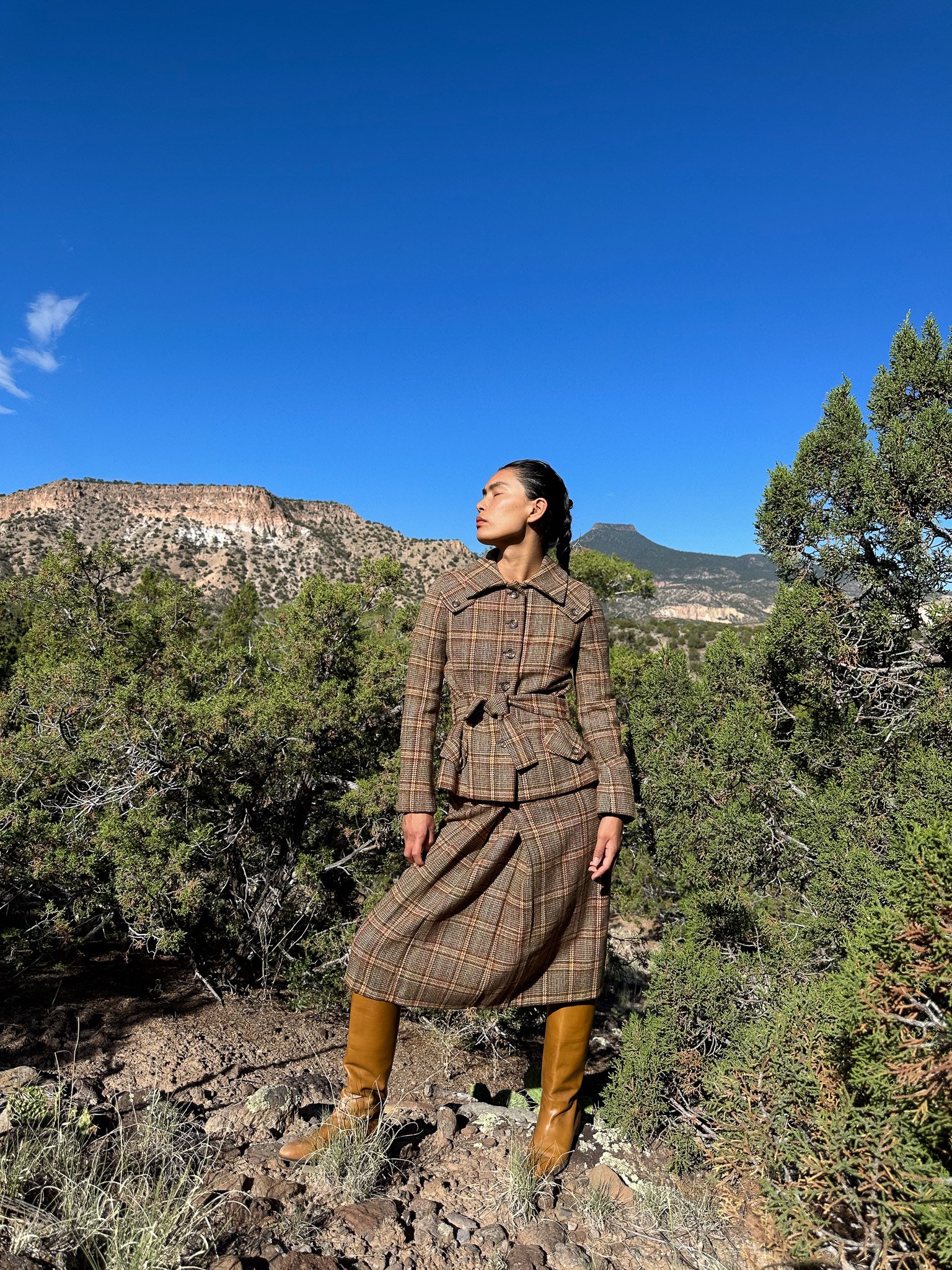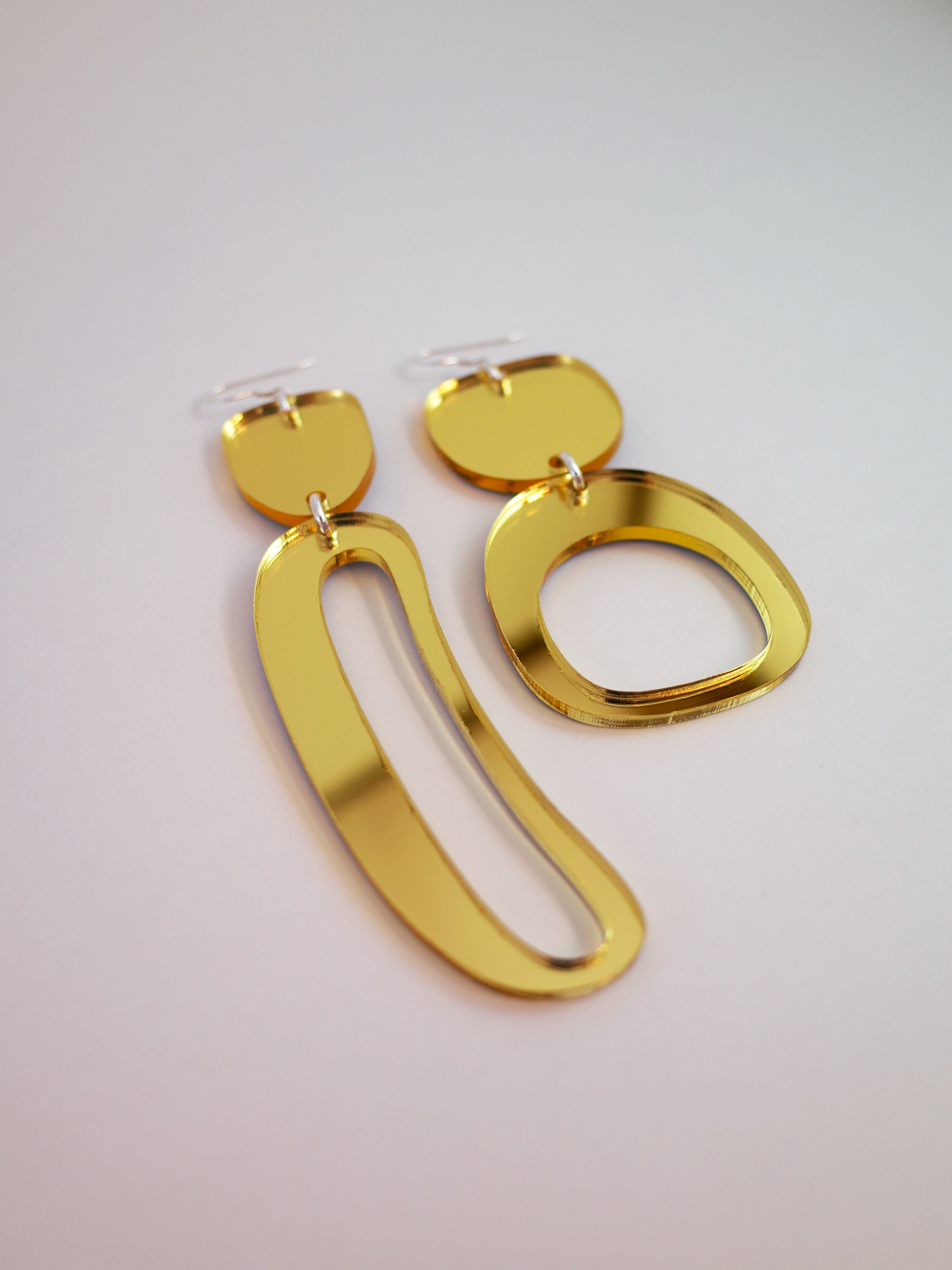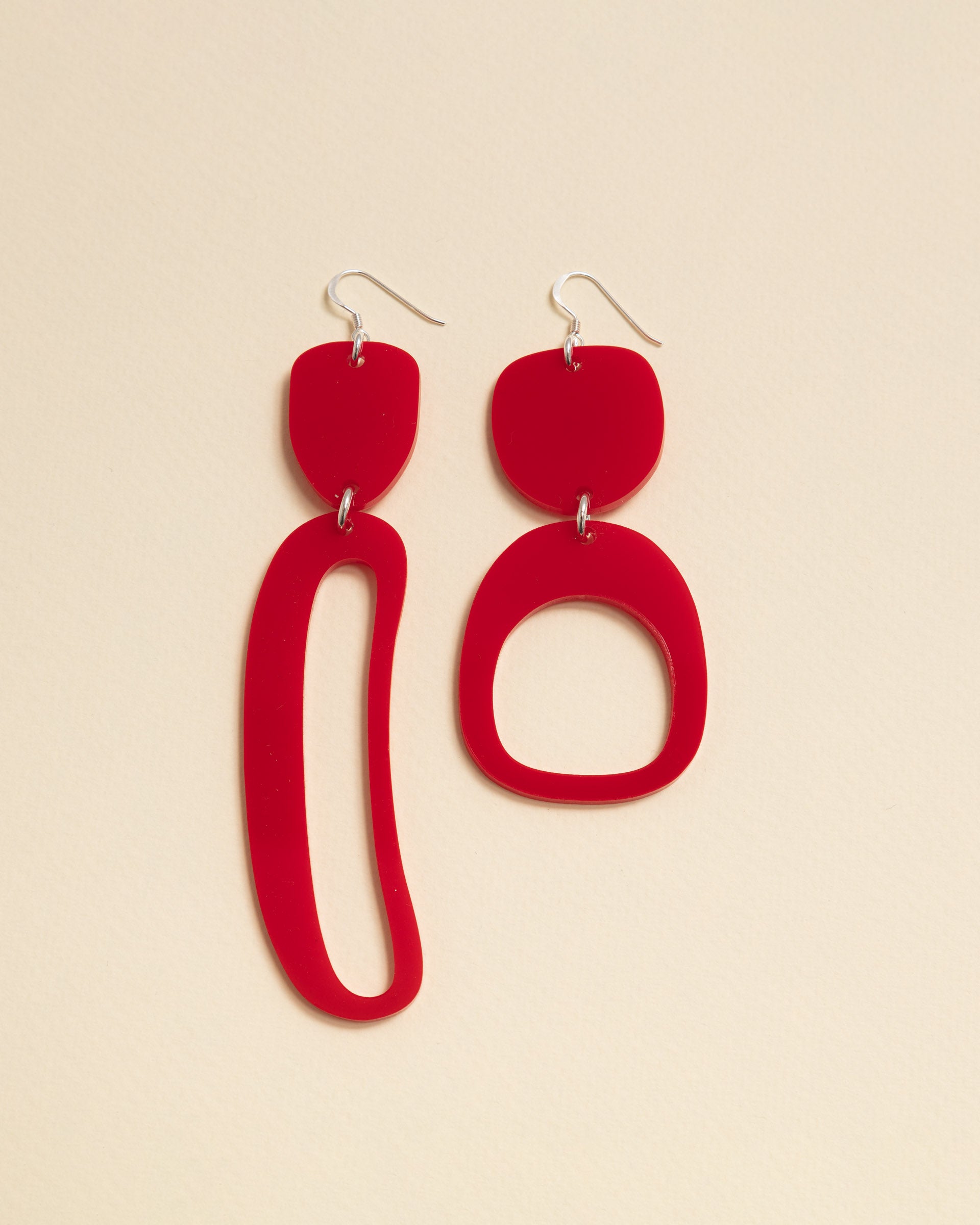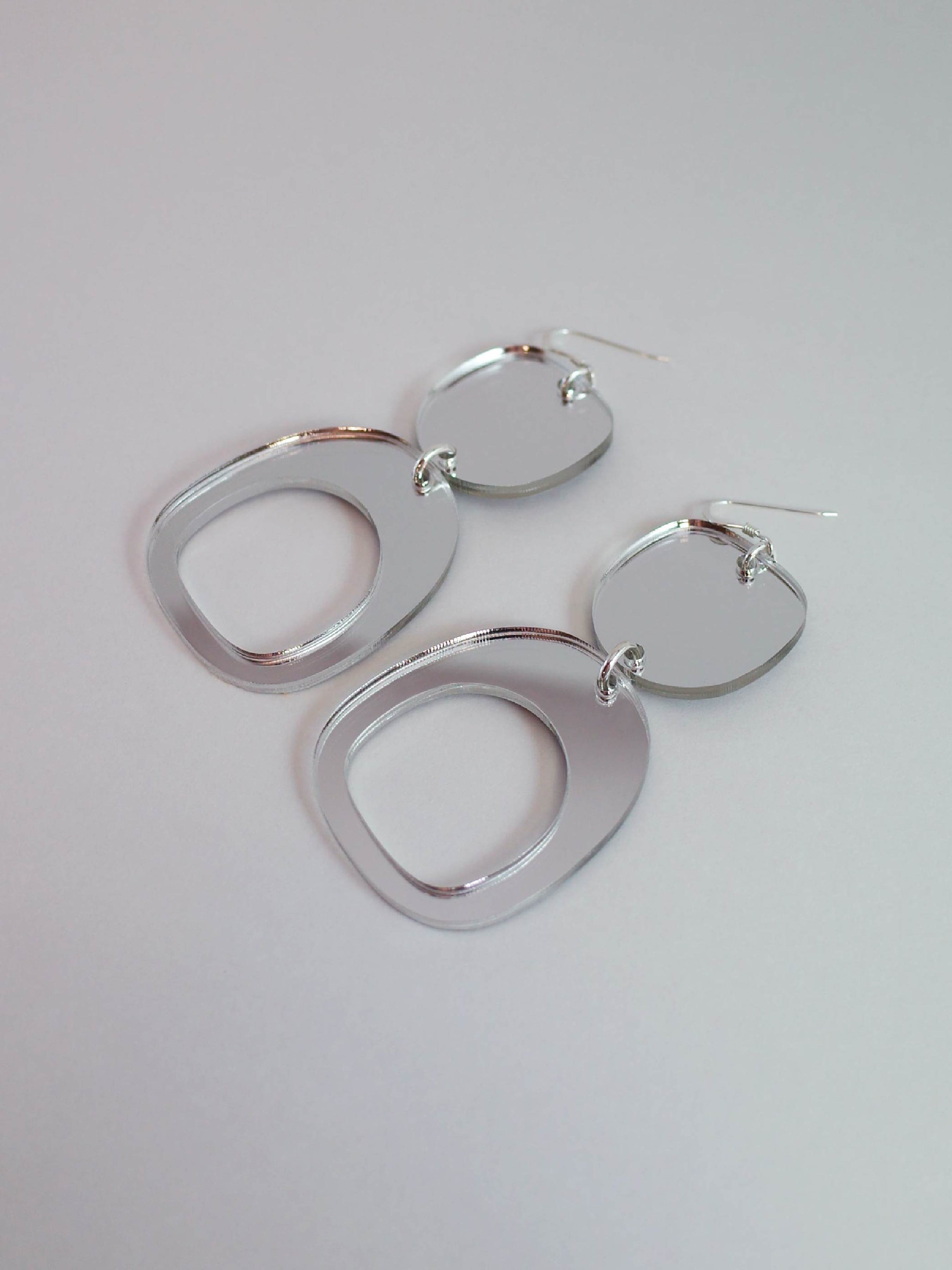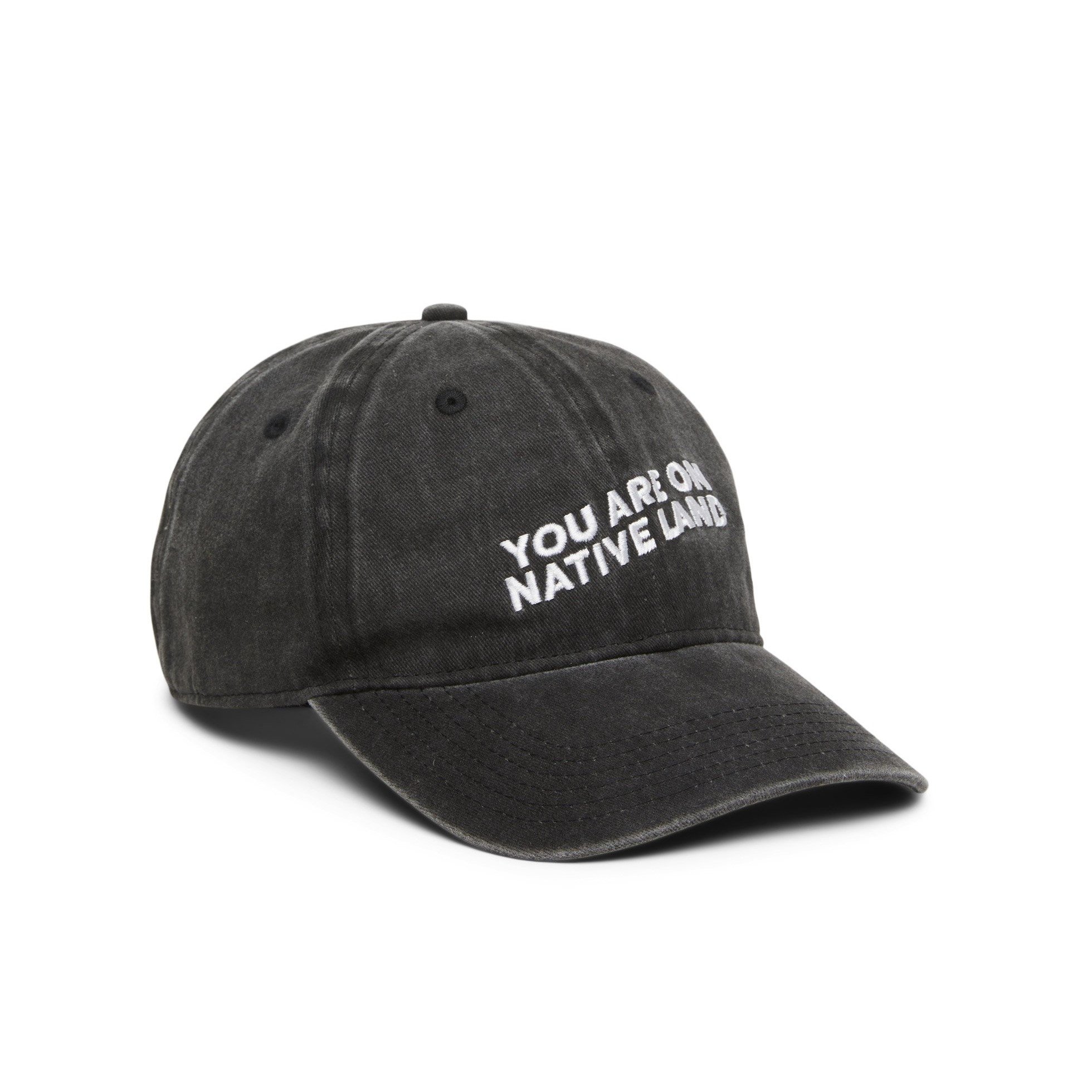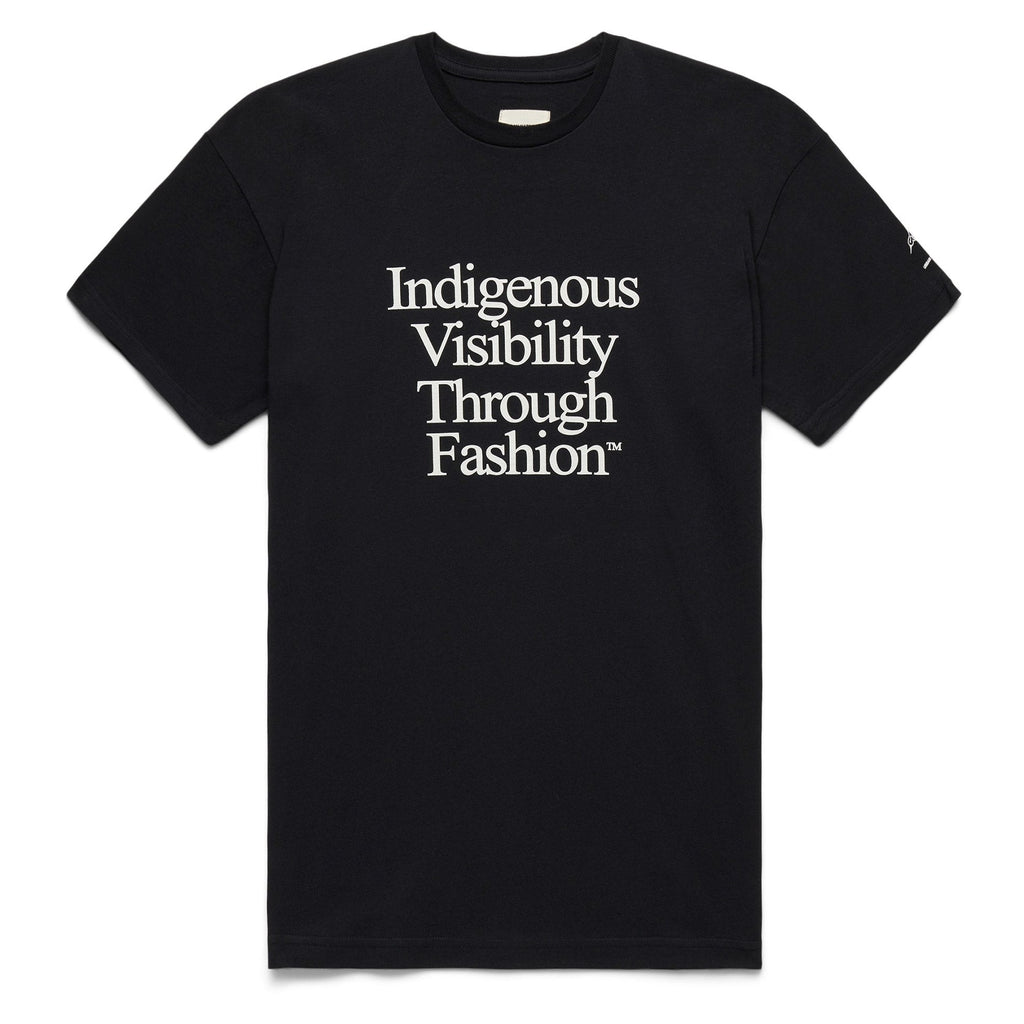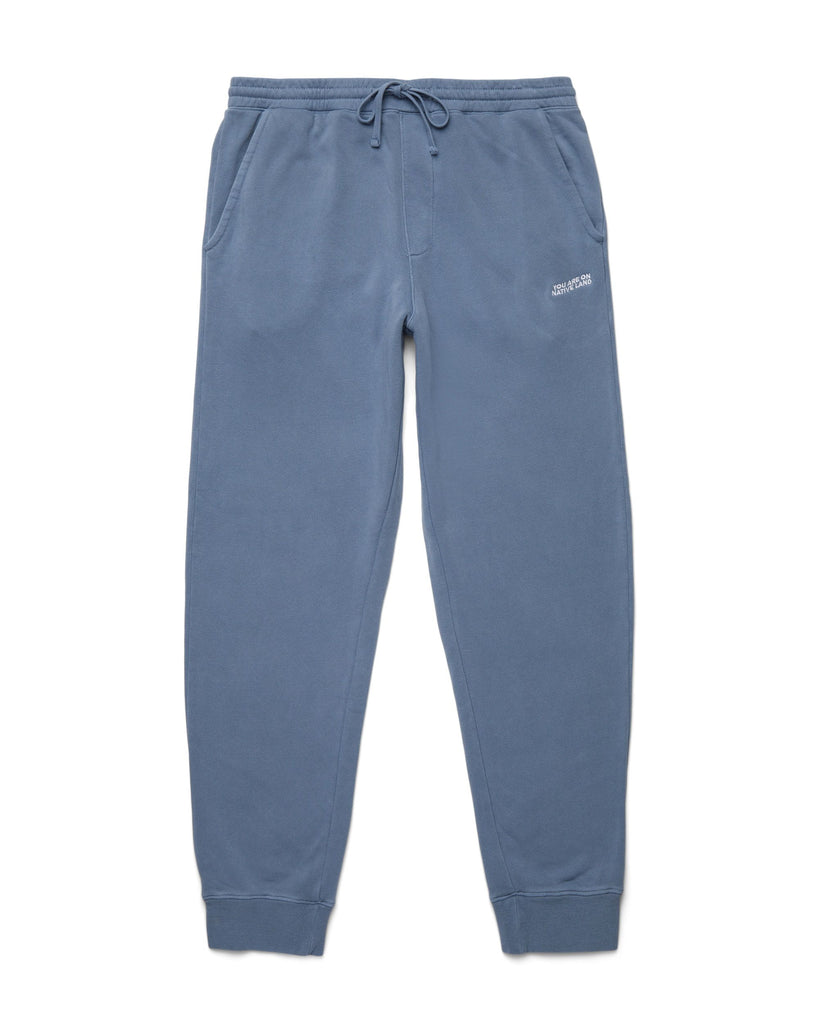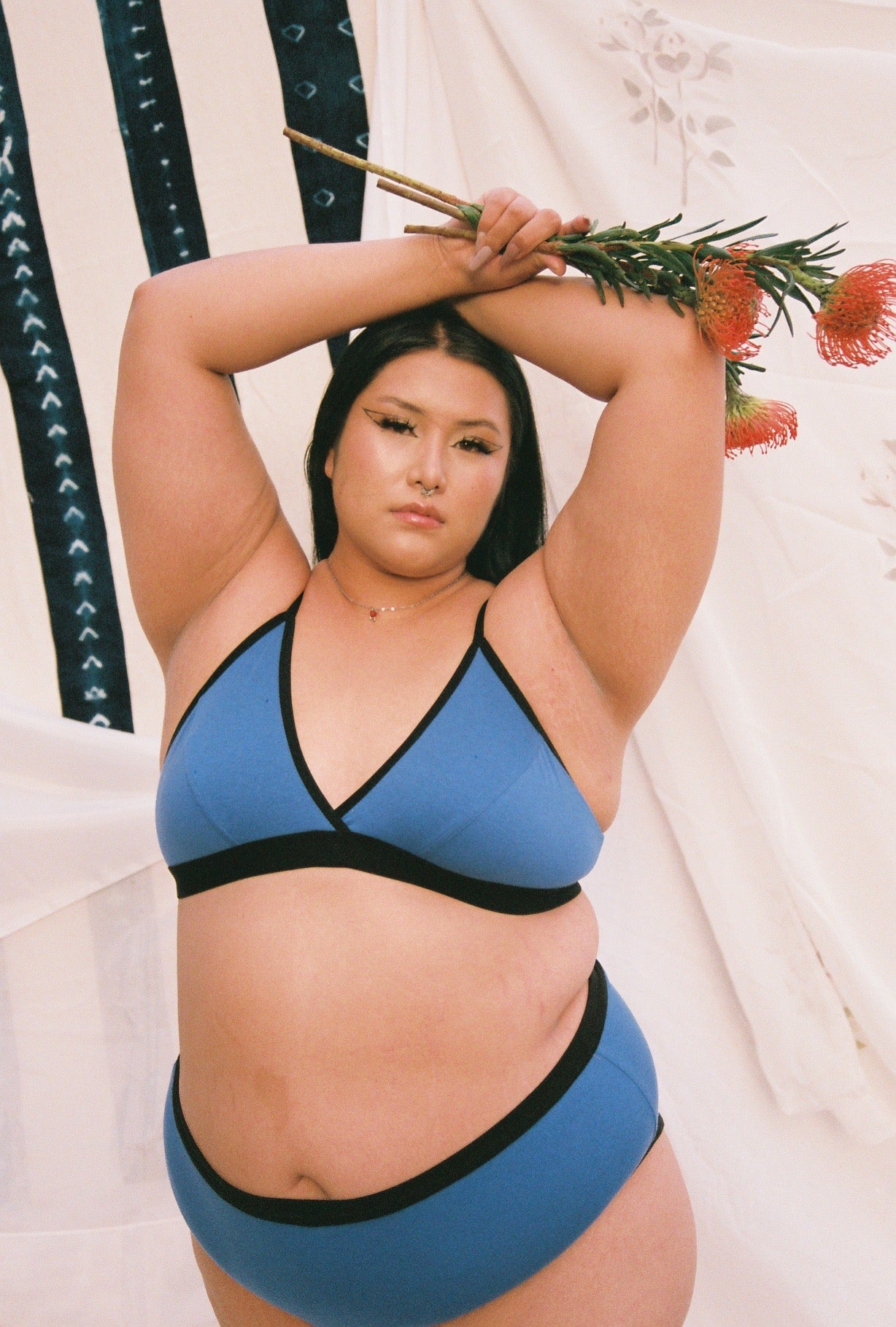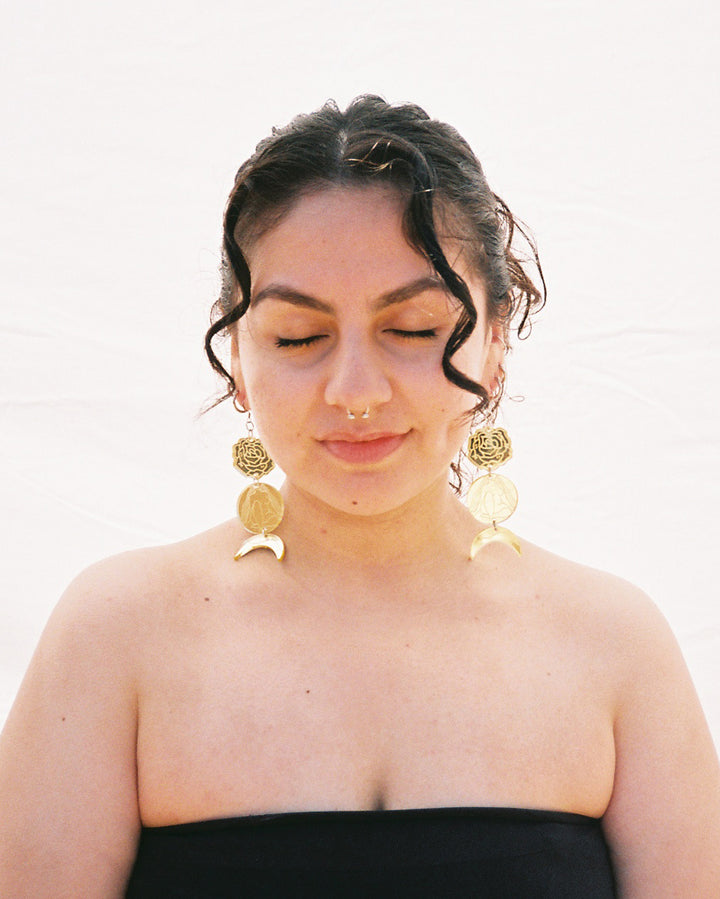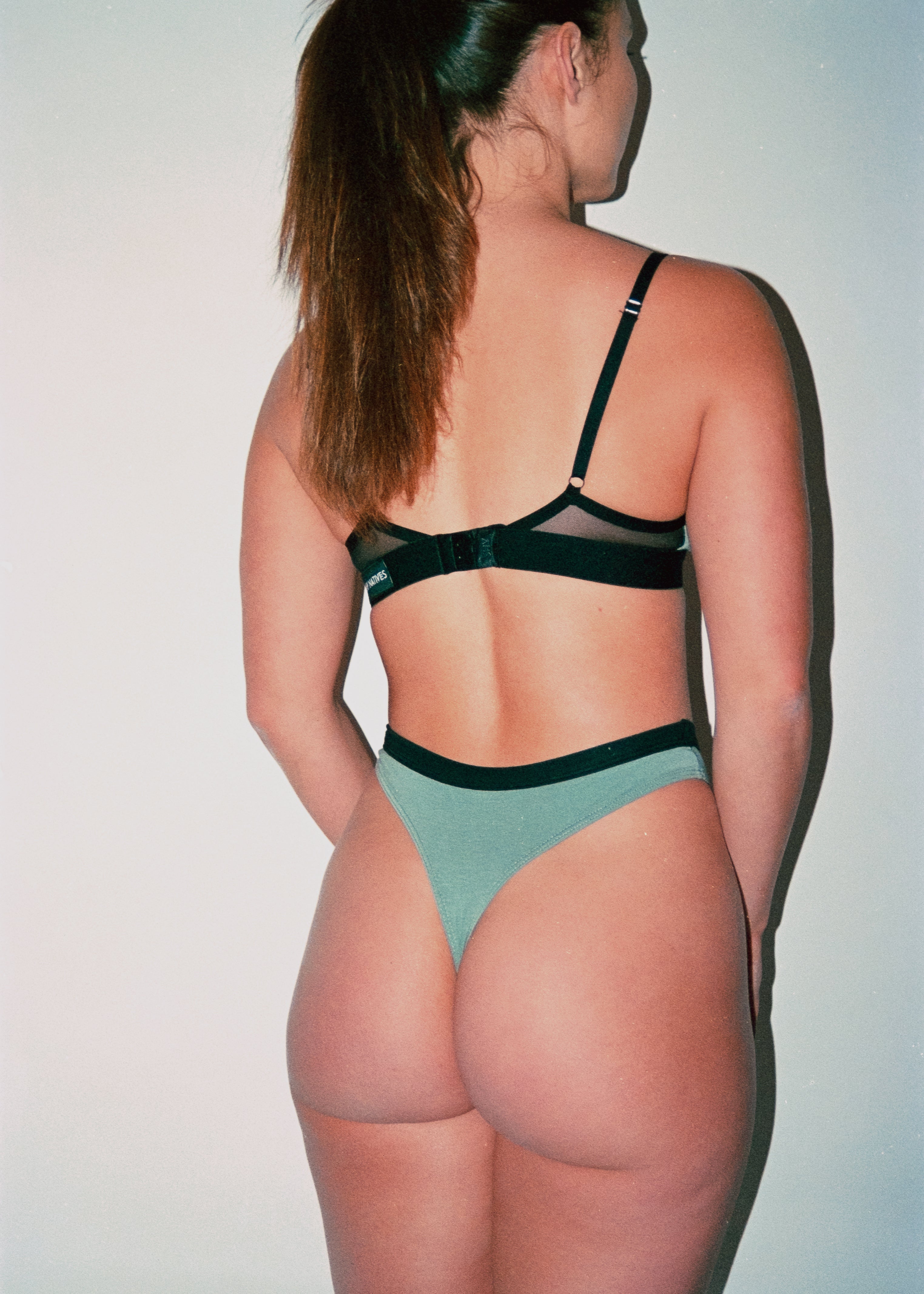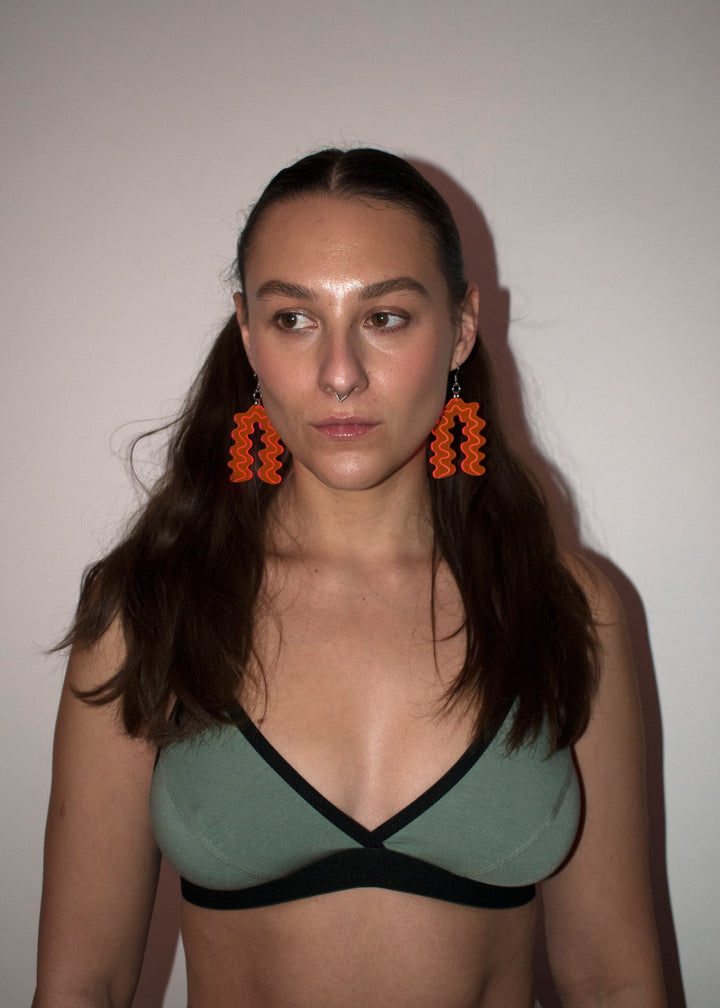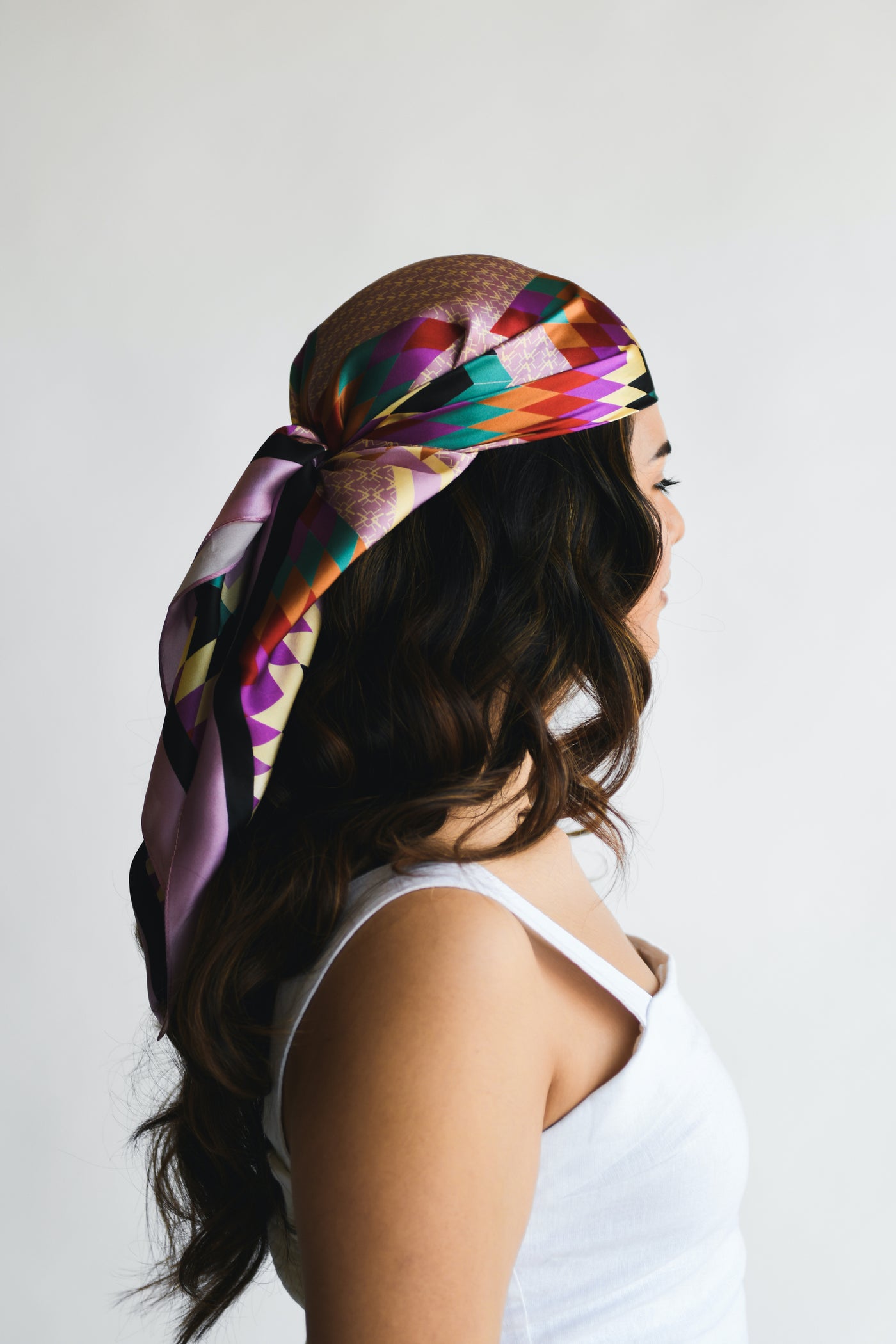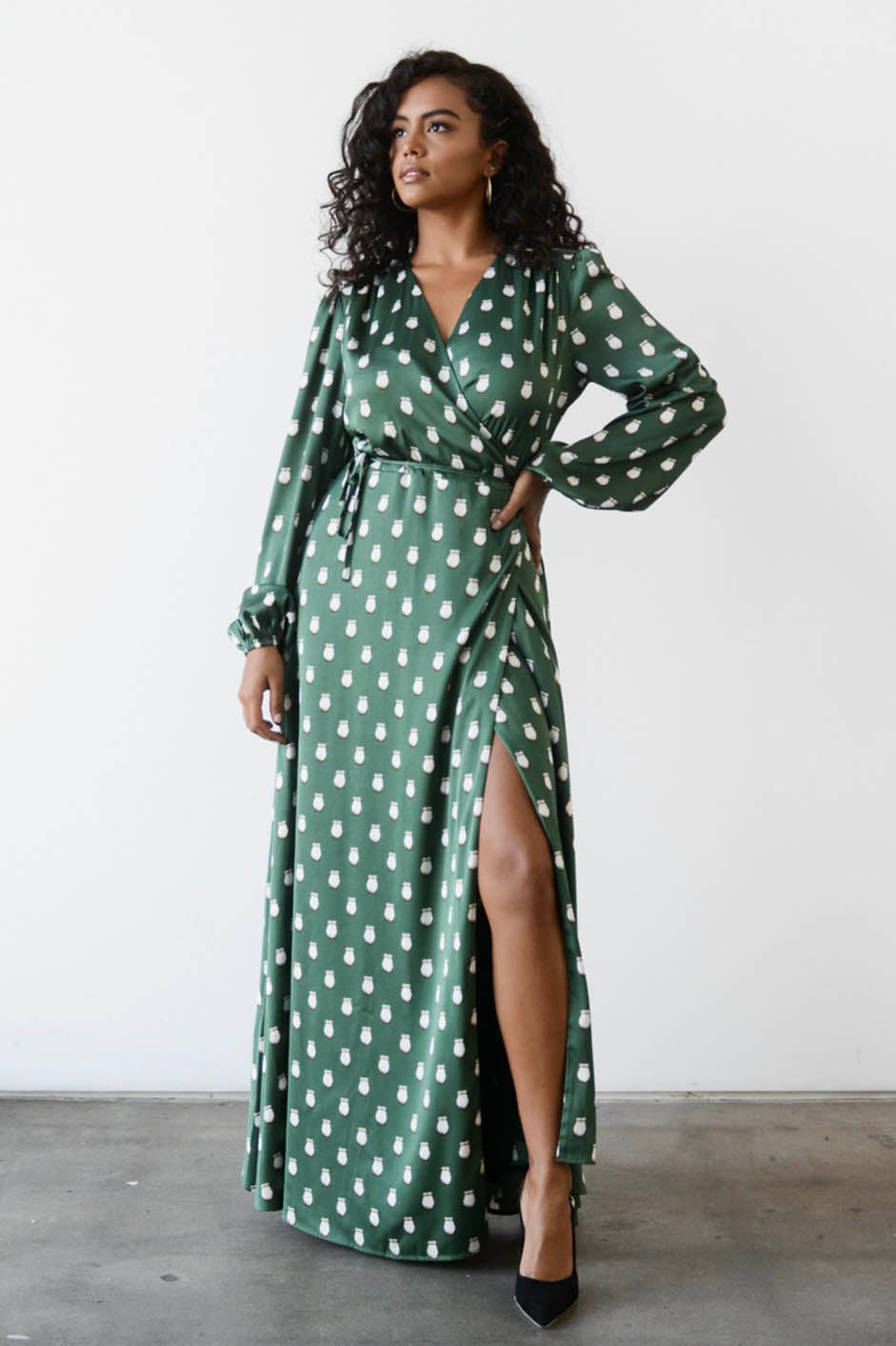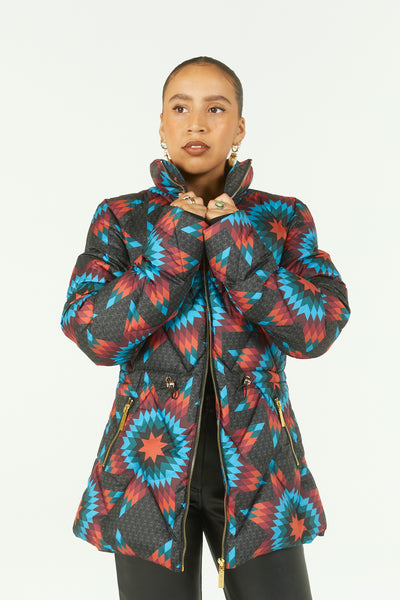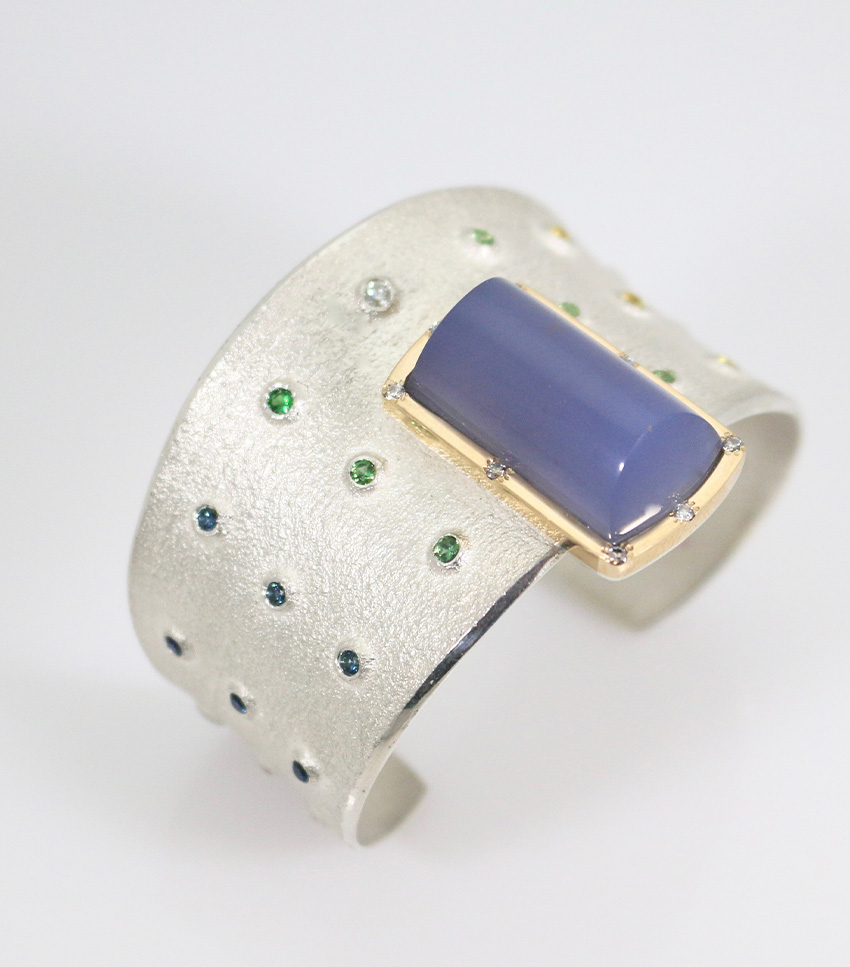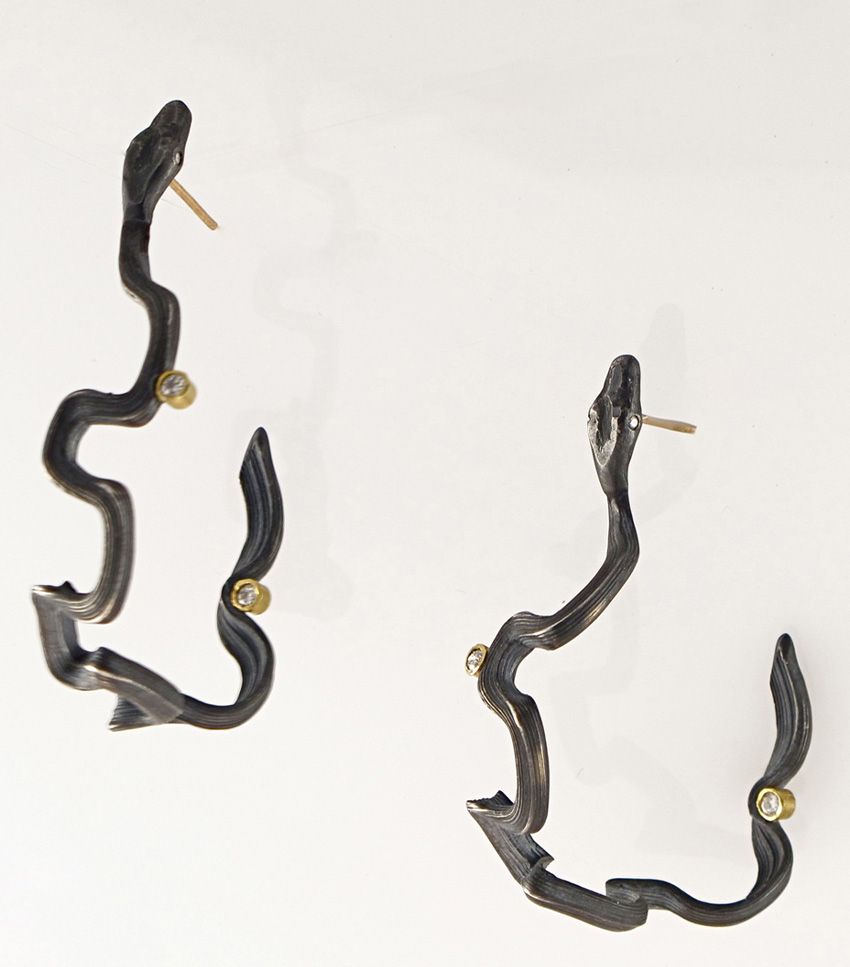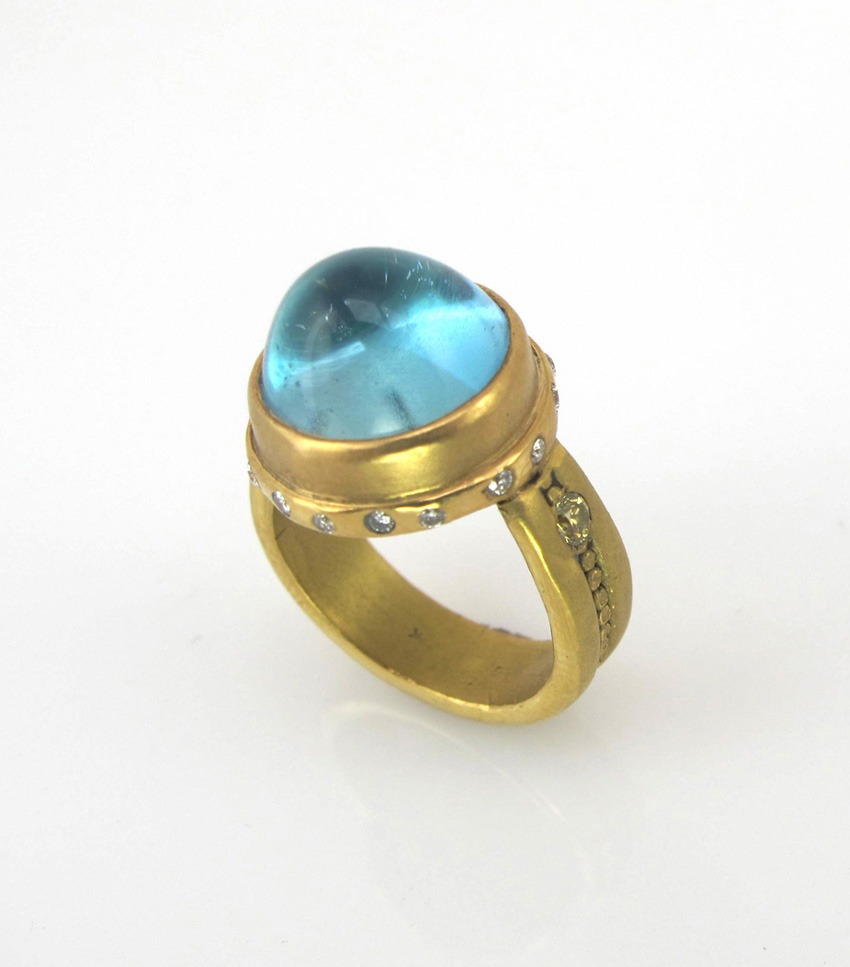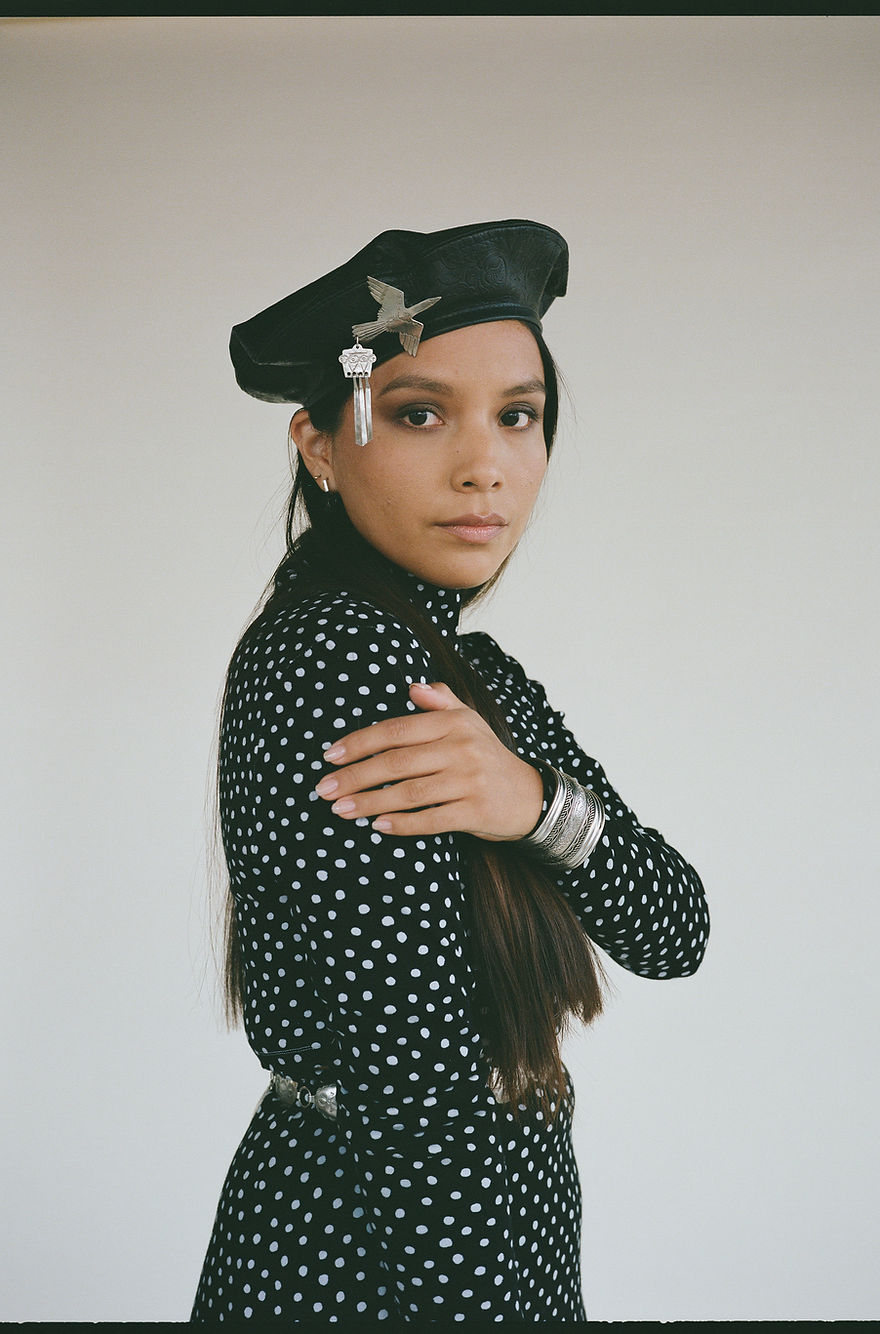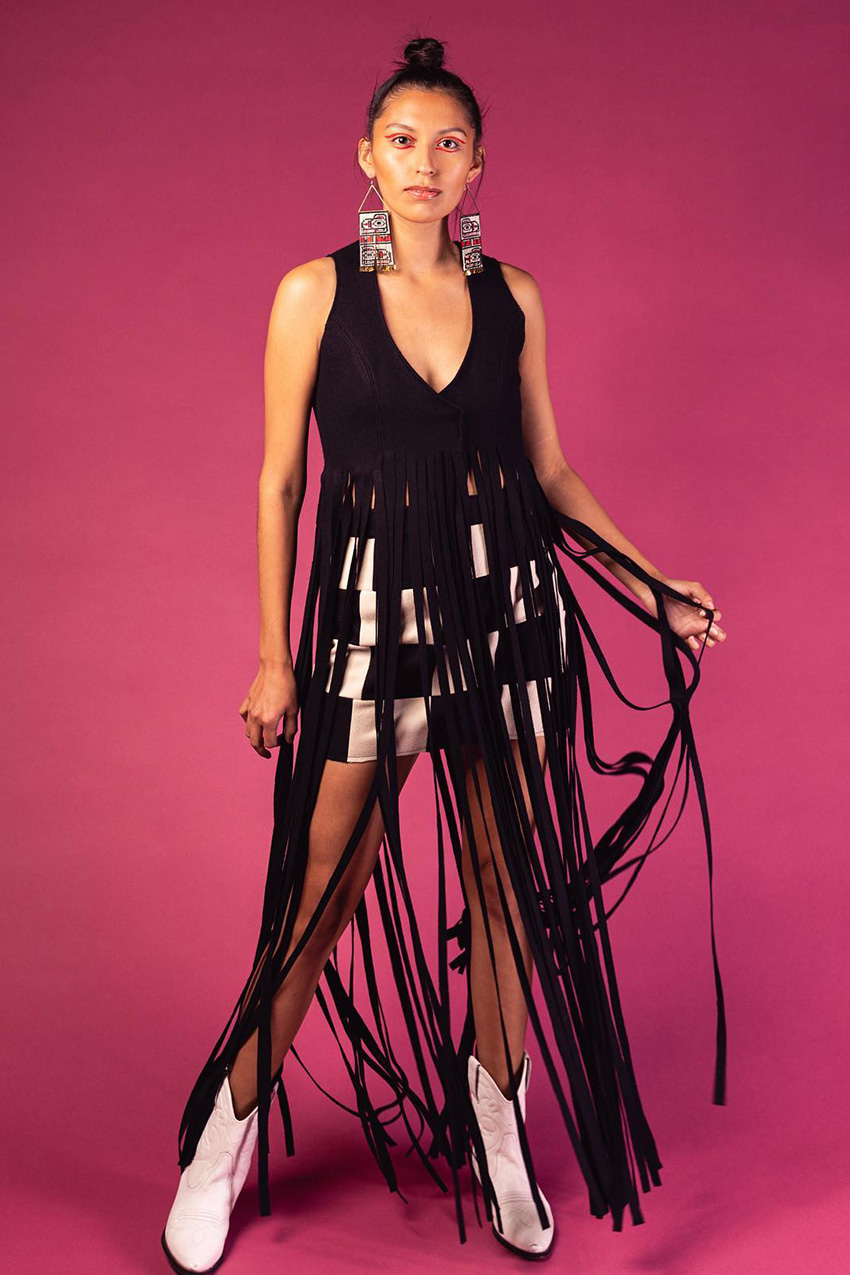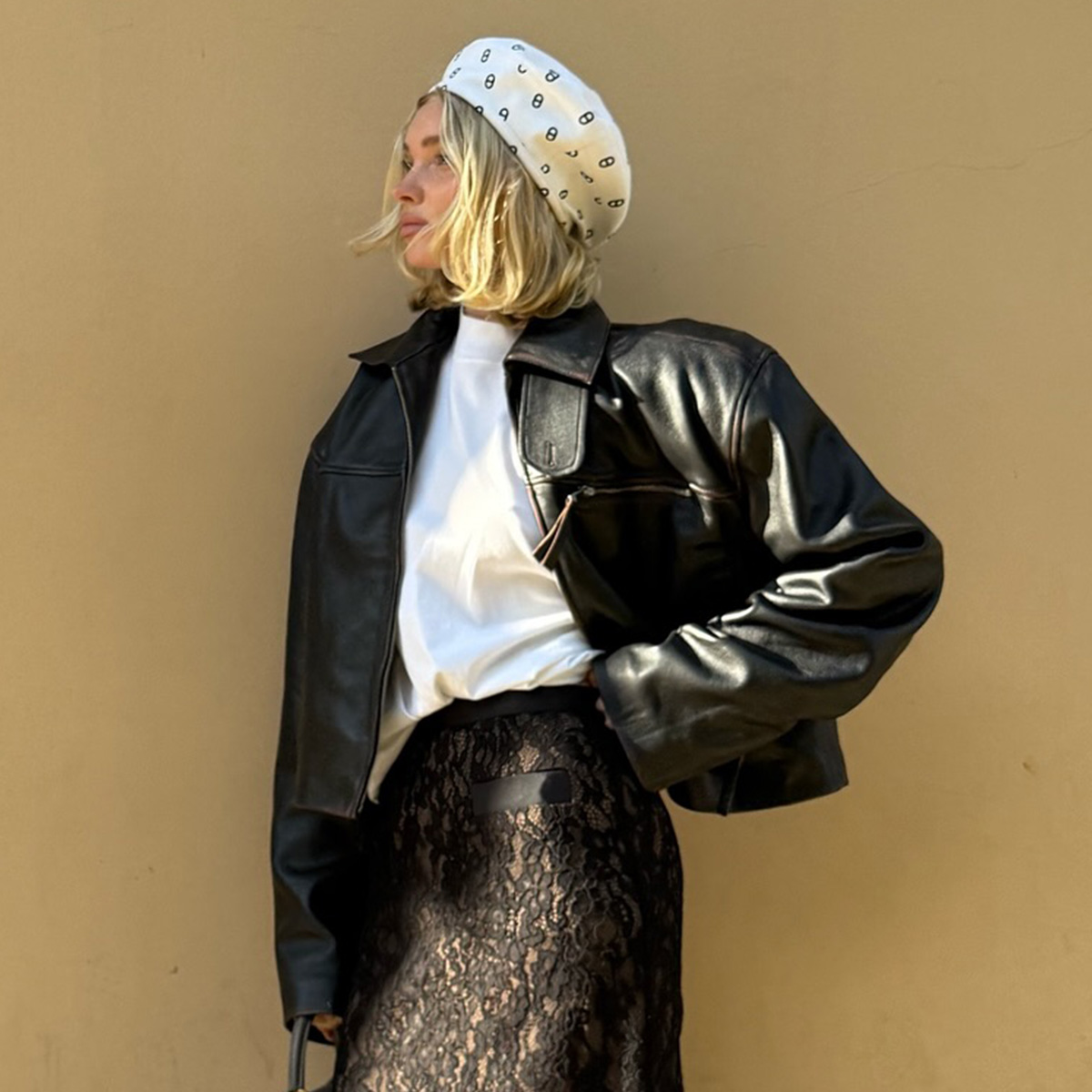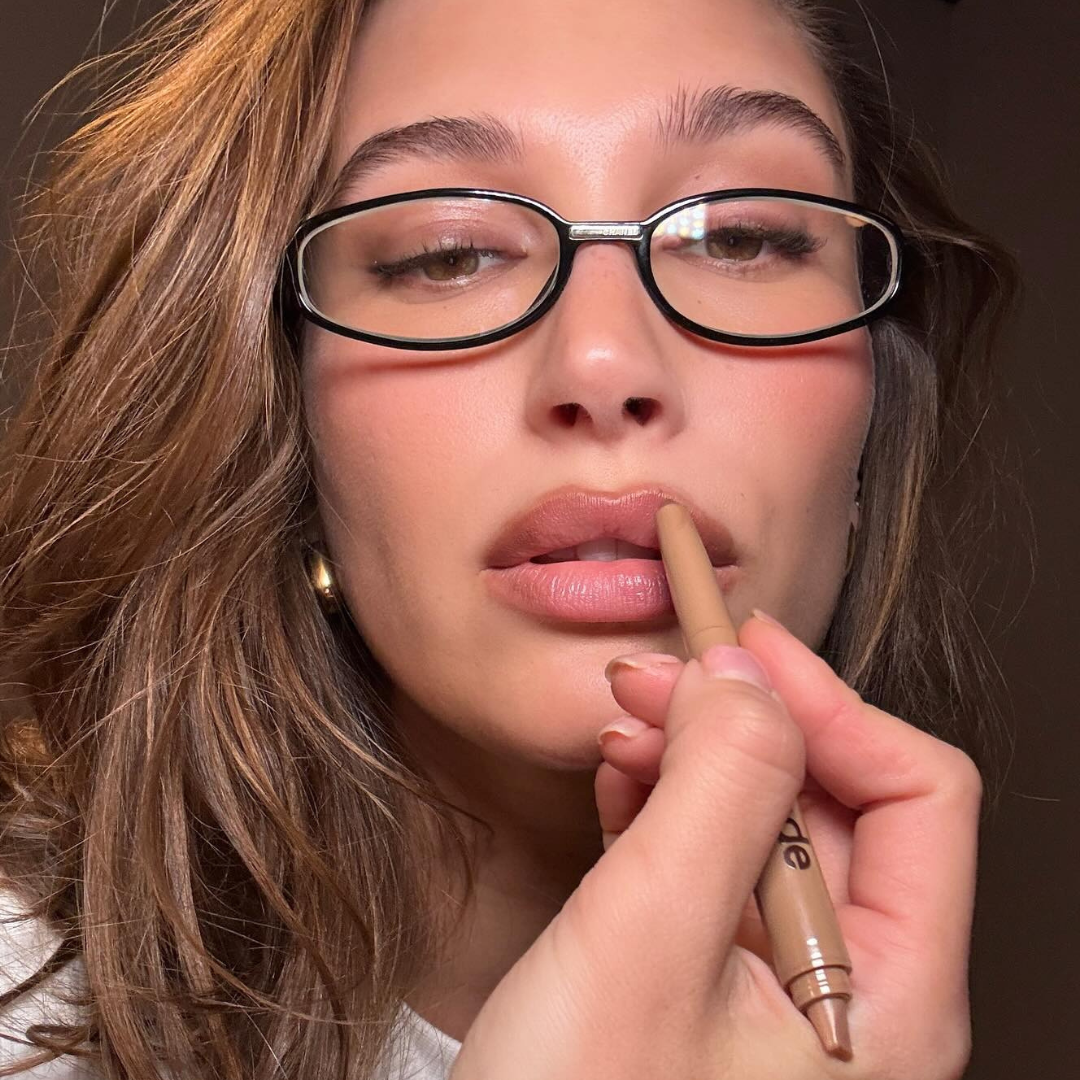7 Beautiful Native-Owned Fashion Brands to Know and Love
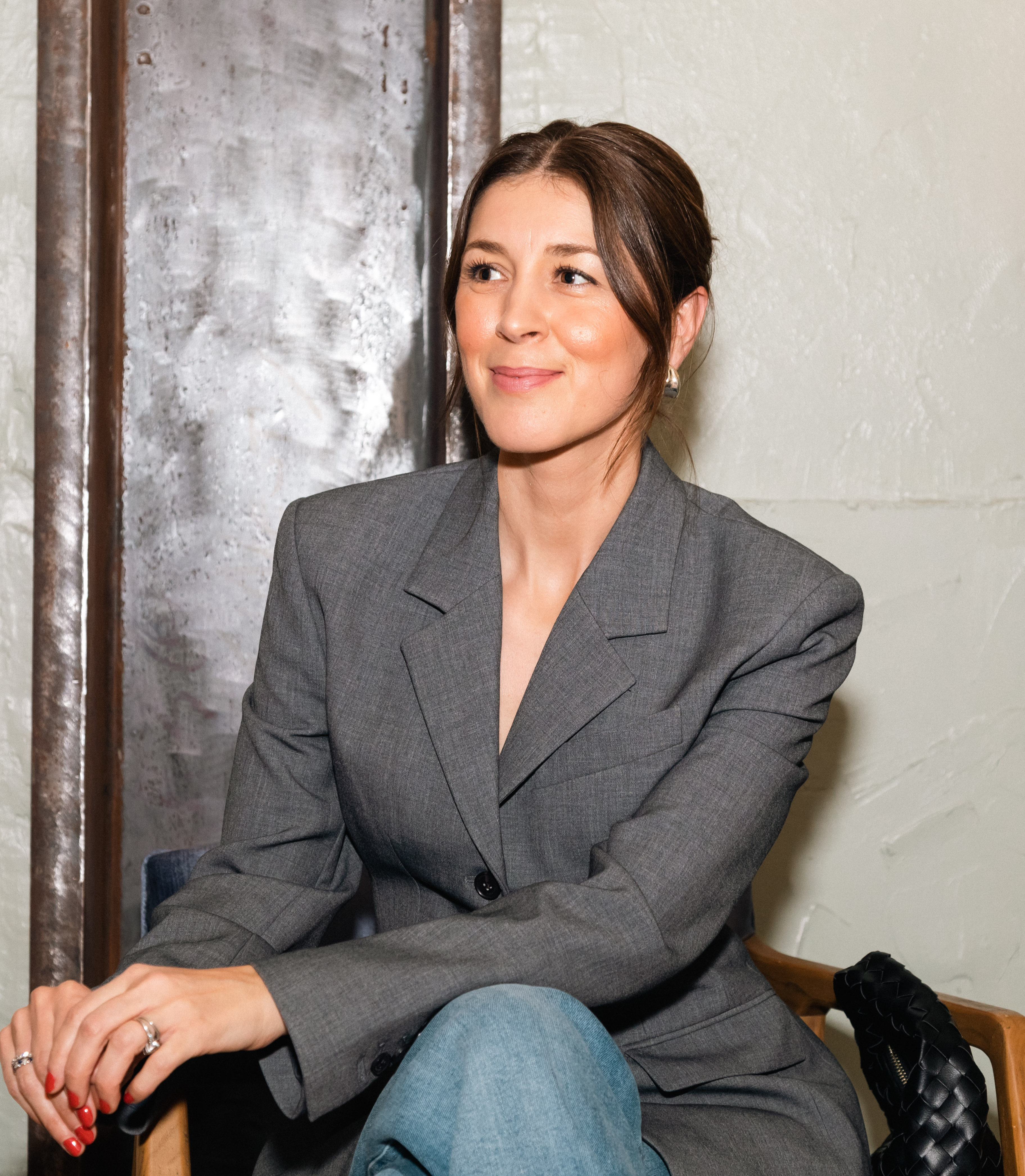
Anna LaPlaca
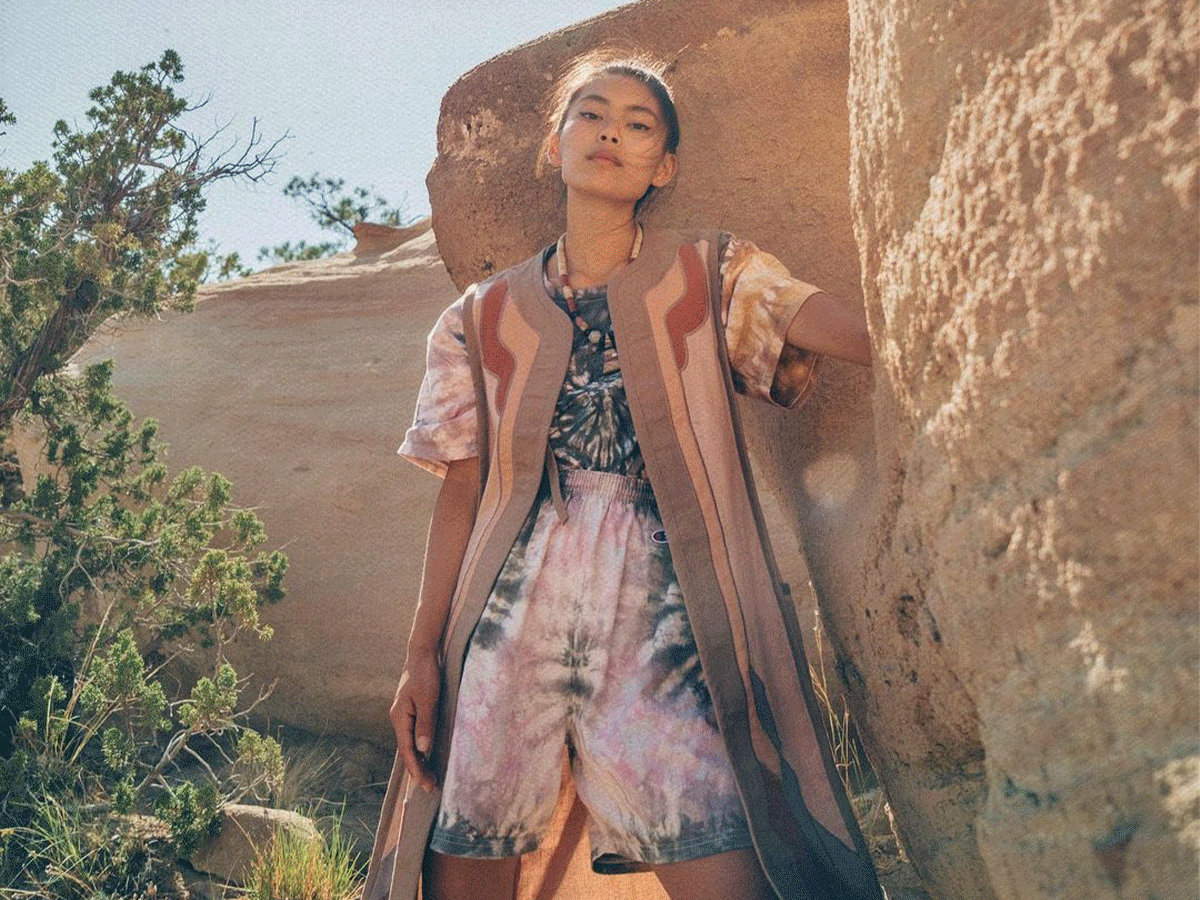
With the Thanksgiving holiday coming up this month, it's a great time to celebrate Indigenous communities while we consider the historical significance of the holiday. We're excited to usher in the new guard of Native-owned fashion and jewelry brands. Each of the seven labels curated here caught the attention of our editors.
For example, 4Kinship's one-of-a-kind vintage and upcycled pieces make it easy to feel good about shopping consciously again, and Shy Natives, a small lingerie brand founded by a pair of sisters, aims to redefine and reclaim the sensuality of Native peoples. These are just a few examples of the kind of emerging talent that stood out to us. We chatted with the below designers about their influences and what their Indigenous heritage means to their design. Ahead, discover what makes each one special and shop their covetable creations.
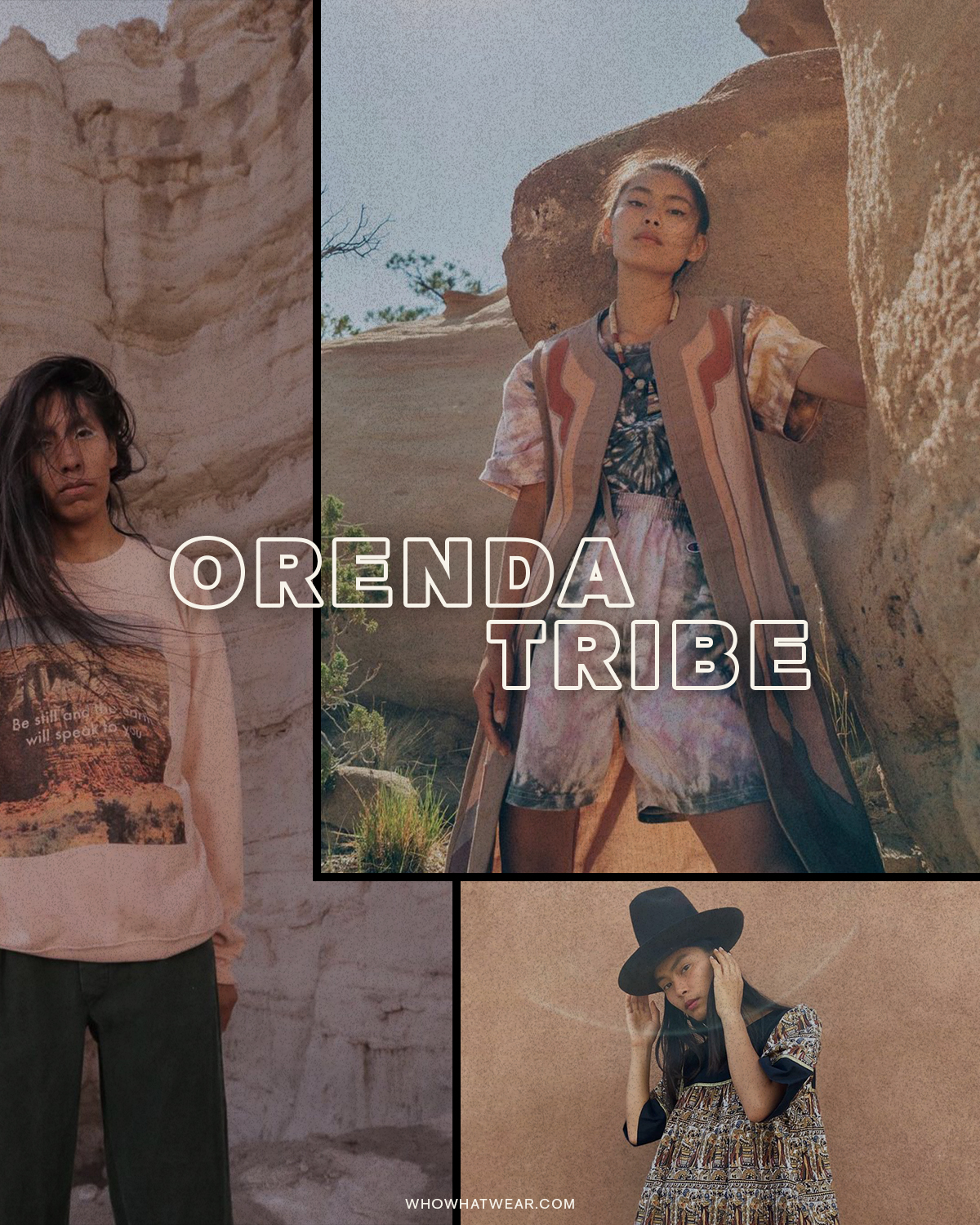
What is your full name, and to which tribe are you affiliated?
My name is Amy Yeung. I am part of the Diné (Navajo) Tribe.
How would you describe your brand to someone who’s not familiar?
Orenda Tribe (now known as 4Kinship) is a Diné women–owned sustainable upcycling brand. We are dedicated to producing handmade, one-of-a-kind, restored, and repurposed vintage products that are made using sustainable processes and since COVID-19 have pivoted to deliver critical aid to our Diné communities.
What influenced you to start your brand?
My daughter, Lily. I was working in fast fashion and had that "aha” moment when I realized I needed to be a better momma to my child and shifted my career from creating corporate wealth and refocused on a small, sustainable design process that gave back to my community. I wanted to leave a legacy for my daughter, to inspire her to spread love and shine light.
Has your Indigenous background influenced your approach to design? If so, how?
Since my journey home to my ancestral lands, I wake at sunrise, set my intentions, and flow through the day with respect to the earth and the sky. I listen. Be still, and earth will speak to you. I’ve refocused my life to bring sustainable solutions to my Diné tribe and feel my ancestors are guiding me on this healing pathway. So the "design” is a moving meditation of color and spirit inspired by a deep connection I know to feel to my relatives.
How do you hope your brand gives back to your community?
Yes, we have refocused our brand to deliver critical aid to our Diné communities in need since the start of COVID-19. We’ve delivered 43,000 food/care kits for our Children of the Nááts’íilid Project with World Central Kitchen delivering over a million meals for our little ones. We’ve raised $200K in funding for ADABI Healing Shelter, a domestic violence and sexual assault shelter that had lost funding. We’ve raised $150K in funding for NDN Collective for critical aid. And $245K has been raised for our Spread Love + Shine Light auction that we convert into weekly critical aid.
Shop:
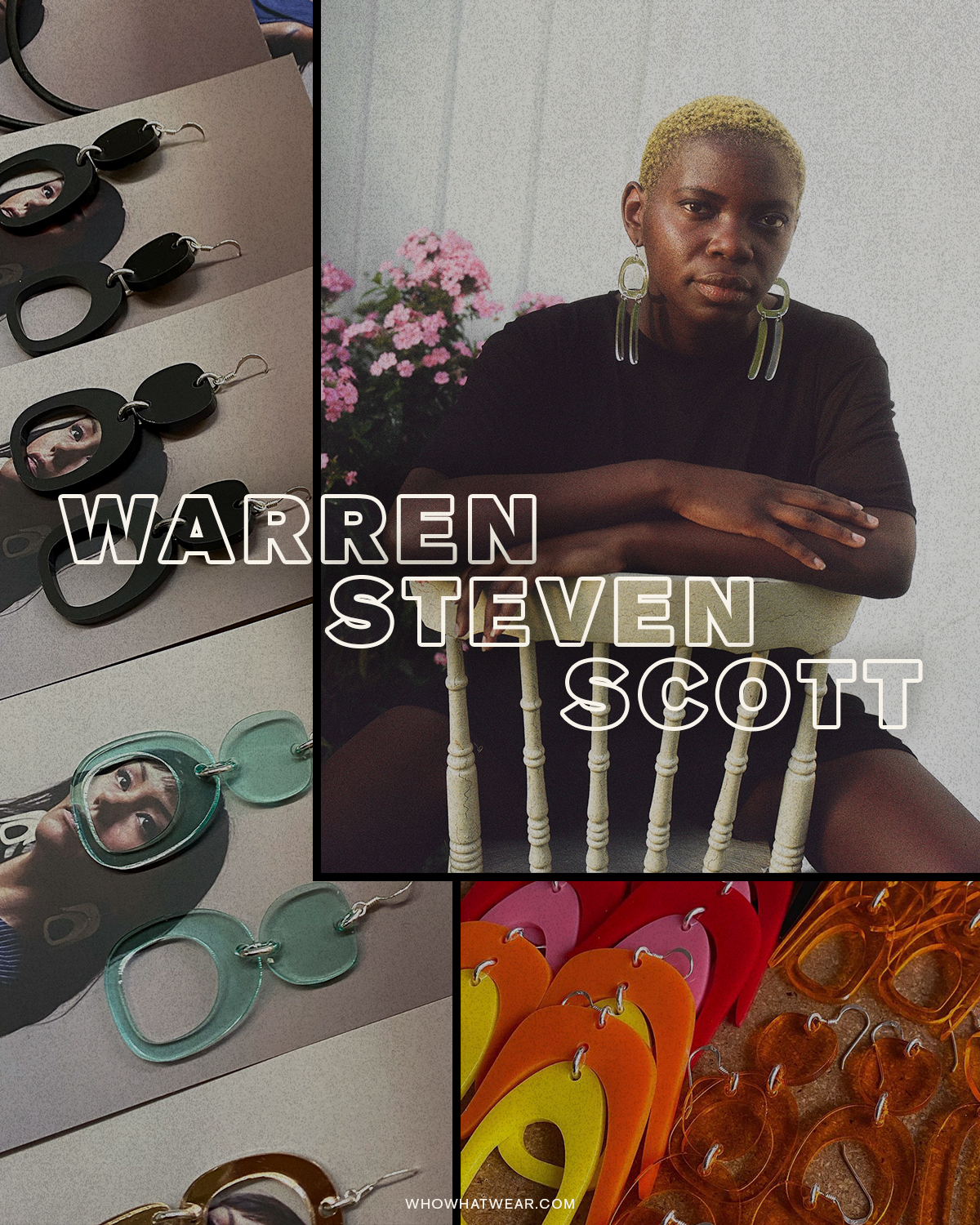
What is your full name, and to which tribe are you affiliated?
My name is Warren Steven Scott. I am a part of Nlaka'pamux Nation and a member of Boothroyd First Nation, which is located in present-day British Columbia.
How would you describe your brand to someone who’s not familiar?
Contemporary Indigenous design; earrings made for Indigenous people and our allies—earrings to be worn by everyone.
What influenced you to start your brand?
It all started with the inaugural Indigenous Fashion Week Toronto in 2018, where I showed my first collection alongside 23 other designers. Toronto, like many cities, was beginning to have a few different fashion weeks, and I had considered partaking in those but never felt totally compelled to actually participate in them. Then, with the creation of IFWTO, it was no longer a question of wanting to be a part of a fashion week—this was the moment, the platform, to really explore my indigeneity within fashion. Here, my work would be modeled by Indigenous models, produced by an Indigenous team, and showcased alongside fellow Indigenous designers and makers. It was a community rather than an event.
Has your Indigenous background influenced your approach to jewelry and design? If so, how?
Absolutely. The acrylic shapes showcased in my jewelry—the ovoid, the crescent, and the trigon—are inspired by the fundamental motifs and figures of Indigenous art from the Pacific Northwest. Some may connect these shapes with those depicted in carvings and totem poles. These shapes, along with key design mentalities like the utilization of forming a positive and negative space, informed my jewelry designs. I wanted to showcase these motifs at the core of their sensibilities to prove their inherent beauty, timelessness, and familiarity. I also wanted to bring modernity to them and explored this through the material. All of the earrings are made from laser-cut acrylic and are very lightweight for a statement earring.
How do you hope your brand gives back to your community?
At first, these earrings were really an exploration for me, a way to discover the kind of art or designs I could create using my indigeneity, as it’s the foundation. Indigenous art is often relegated to another time, to history, and it feels like that because we have lost so much—our land, our voice, our culture—through acts of assimilation throughout history. I wanted to reconnect to these things that we have lost and chose to do so through art and design. My community of Indigenous customers across the world feels the same need for reconnection and also feels much pride and joy. I would also say that I have felt this sense of support from our allies as well. I hope my jewelry can be a part of that pride—a celebration of our past and a nod to the future of Indigenous design.
Shop:
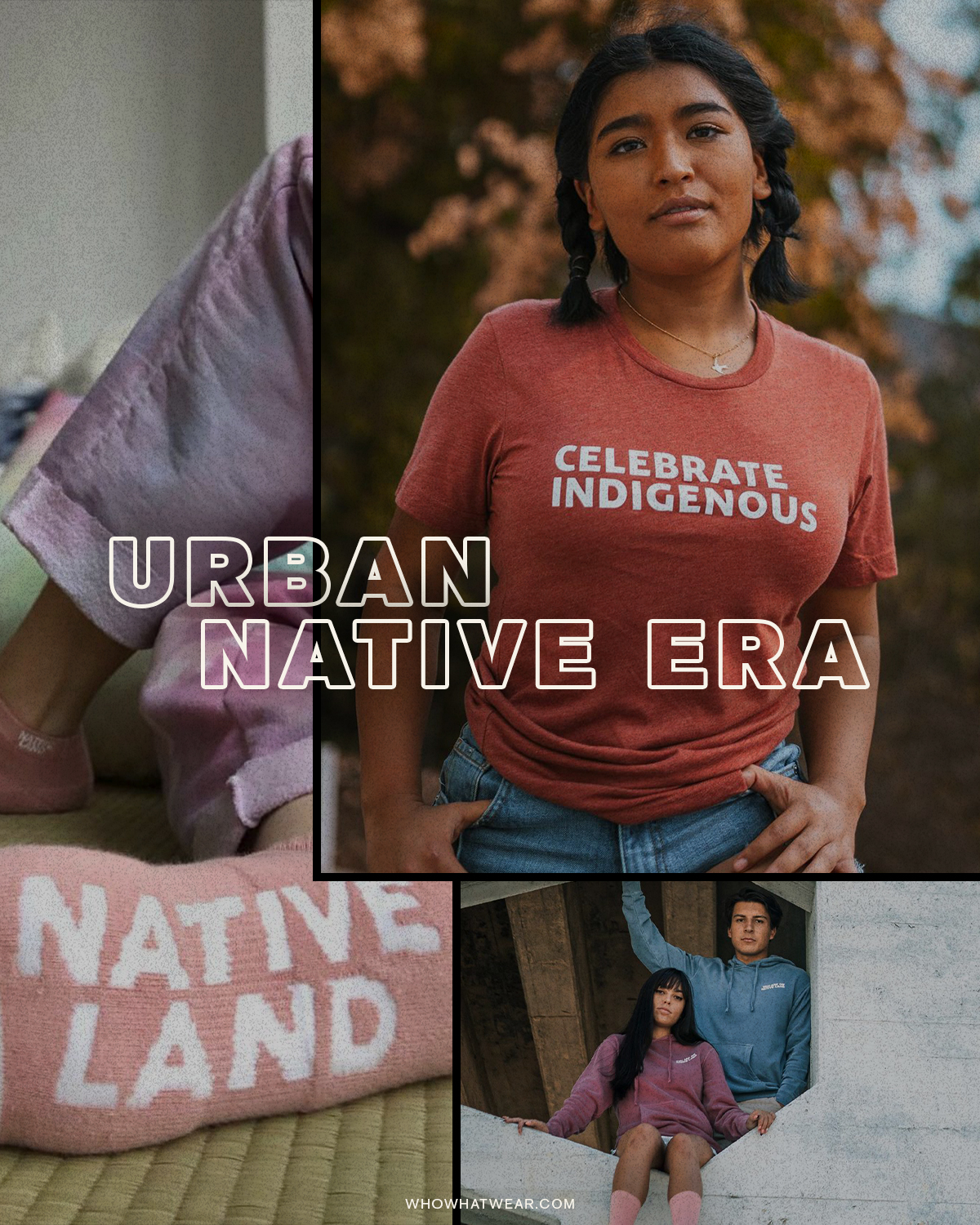
What is your full name, and to which tribe are you affiliated?
Urban Native Era was founded by Joey Montoya, who is Lipan Apache. Our small team of five consists of Indigenous and non-Indigenous folks from across Turtle Island (North America).
How would you describe your brand to someone who’s not familiar?
Hud Oberly: Urban Native Era is like nothing else in the industry. An Indigenous brand with equal parts clothing design and content. A brand relatable to the Indigenous community and a source for the Indigenous perspective on happenings right now, today, and in the past.
What influenced you to start your brand?
Joey Montoya: In my freshman year of college, I observed a lack of visibility around Indigenous issues and was inspired by Indigenous sovereignty movements like Idle No More to take action toward raising awareness by providing an approachable way for Indigenous folks and allies to uplift Indigenous voices.
Has your Indigenous background influenced your approach to design? If so, how?
HO: We design clothes based on a variety of things. Influences can be from something I do or see in my Osage culture or something we see in popular streetwear trends today. It is truly different in every piece and each design. This combination of worlds is what makes Urban Native Era so unique and relatable.
How do you hope your brand gives back to your community?
JM: Community has always been the center of the brand. We do our best to amplify Indigenous-led movements, organizations, and people. This year, we teamed up to support Indigenous graduates by coming out with a specific graduation T-shirt, as we knew this would be an odd year for most students graduating. All proceeds from the T-shirt went to the American Indian Graduate Center to support Indigenous students.
Shop:
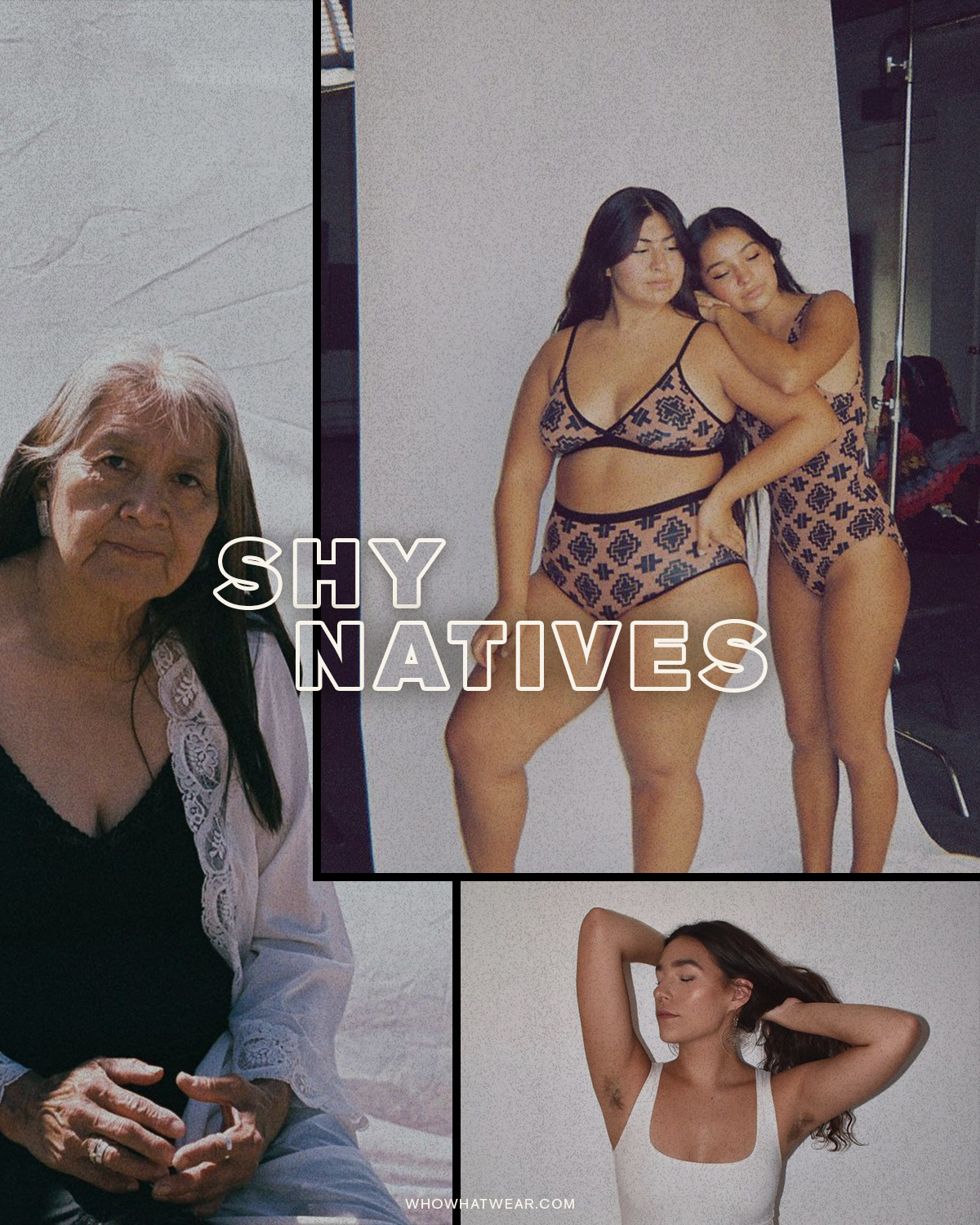
What are your full names, and to which tribe are you affiliated?
Madison Ann Craig and Jordan Ann Craig, and we are Northern Cheyenne.
How would you describe your brand to someone who’s not familiar?
We are a Native-run lingerie, apparel, and accessory brand. We focus on comfortable, flirty pieces to uplift all people.
What influenced you to start your brand?
It all started with creating the perfect supportive bralette. Madi struggled in finding a great-fitting bralette in the stores, so she turned to her sewing machine to craft the perfect pattern and fit. Madi started sewing bralettes for Jordan and friends, developing her skills as a self-taught fashion designer. Jordan has a passion for film photography, design, and vintage aesthetics, and together, we started collaborating and documenting Madi’s beautiful creations. Seeing a need for quality fit and Indigenous-designed undergarments, we turned our creative hobby into a beautiful, high-quality, and inspiring brand.
Has your Indigenous background influenced your approach to fashion and design? If so, how?
Being Indigenous women is fundamental to our brand. Indigenous women have been oversexualized for far too long, and Shy Natives is a platform for individuals to express themselves however they please. We are taking back our sensuality and providing a safe community for people to feel comfortable, sexy, and empowered.
How do you hope Shy Natives gives back to your community?
Shy Natives aims to help redefine and reclaim the sensuality of Native peoples through our products, photography, and community. We would like to expand to also support other Indigenous-led movements and nonprofits, specifically around sex education, missing and murdered Indigenous women, and currently COVID relief.
Shop:
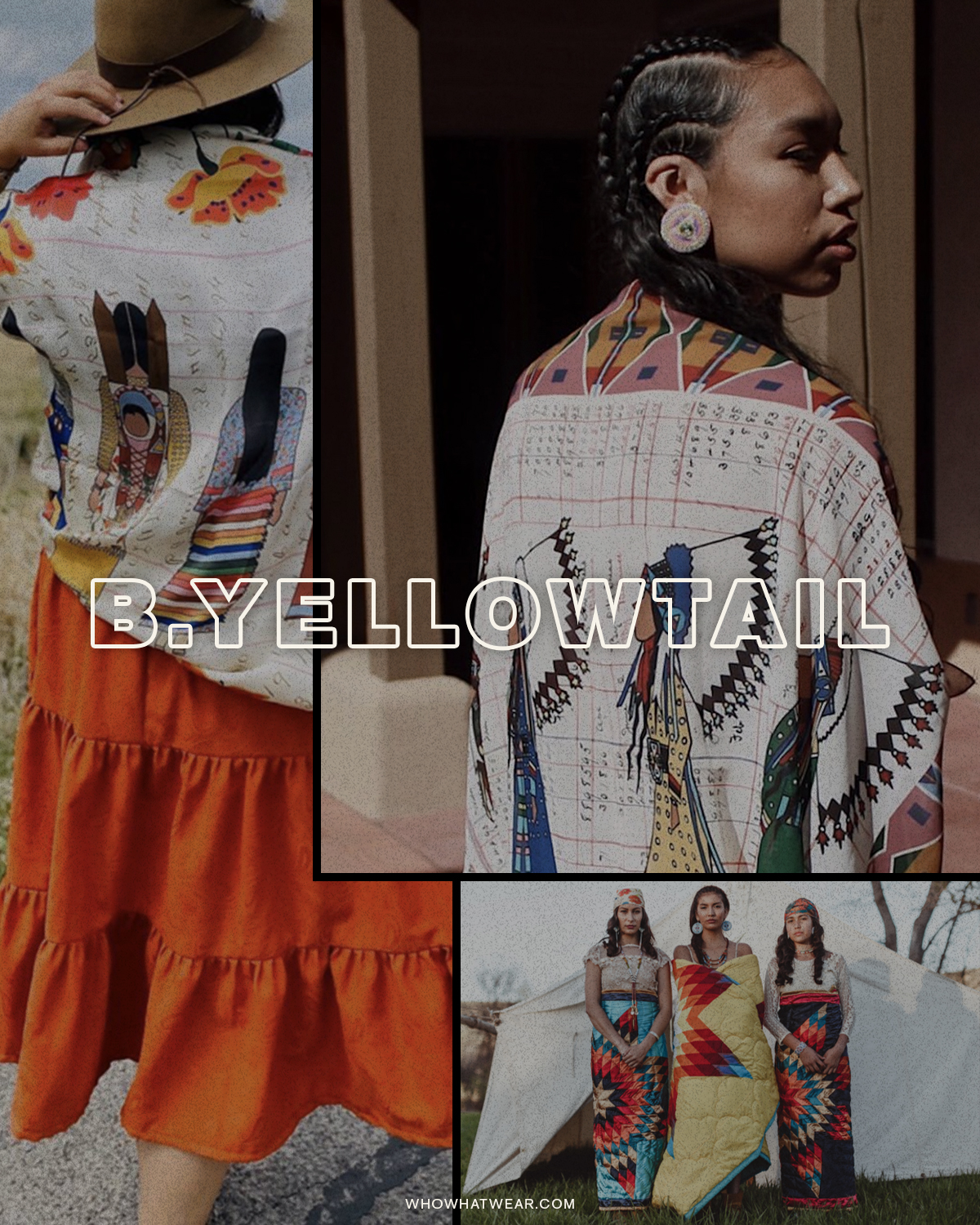
What is your full name, and to which tribe are you affiliated?
My name is Bethany Yellowtail. I was raised on the Crow Indian reservation (Apsáalooke Nation), and I am an enrolled member of the Northern Cheyenne Nation. Both of the tribes I am from are located in Southeastern Montana.
How would you describe your brand to someone who’s not familiar?
B.Yellowtail is a Native American–owned and operated fashion brand and retailer that specializes in storytelling through wearable cultural art.
Our women’s clothing is designed in-house by Native designers, while the #byellowtailcollective serves as our brand initiative to support the entrepreneurial spirit of Native American, First Nations, and Indigenous creators.
With tradition and culture at the heart of what we do, we've set out to share authentic Indigenous creativity with the world while prioritizing economic opportunities for First peoples of Indigenous North America.
What influenced you to start your brand?
I always wanted to have my own fashion brand. I’ve been dreaming about it since I was a teenager. I learned to sew when I was very young thanks to my grandmother and auntie. I also started designing clothes in my seventh grade home economics class. However, it was after I graduated from design school and entered into the fashion industry workforce when I really understood my role and desire to run my dream company that is now B.Yellowtail.
Early in my fashion career, I worked for several brands that often appropriated Native American designs. At the time, I was an entry-level employee with no power or say in the matter, but it was there I realized I wanted to create a brand that truly represented the culture, stories, and people I come from. I wanted to see myself in a brand for once and to create a platform that Native people felt proud of and respectfully and authentically support the community I love and belong to.
Has your Indigenous background influenced your approach to design? If so, how?
Absolutely, my background has influenced everything about the way I do business, what I’m inspired by, and who I'm responsible to.
Native American culture is not in the past; it’s happening and evolving right now. Not only am I inspired and influenced by my cultural heritage, our histories, ancestral stories, and designs from my direct family lineage, but I’m also inspired and motivated by Native American culture that is happening and evolving all around us.
I am directly tied to and incredibly involved in my tribal communities (Northern Cheyenne and Crow), so the B.Yellowtail brand inherently has a strong pulse and sense of responsibility to also raise awareness, especially for issues most pressing to our people.
How do you hope your brand gives back to your community?
Yes, our platform, the B.Yellowtail Collective, which supports Indigenous entrepreneurs, was created so that we could create economic opportunities for cultural artists. Most of our artists are paid on a consignment basis, receiving 70% of the profit from retail sales while we take 30%. It is our intention to use our platform to amplify and support the entrepreneurial spirit of our people.
We also are very active in our tribal community. During the pandemic, we donated well over 20,000 cloth masks as well as produced 40,000 more at a low cost to prioritize various nations and tribal lead grassroots to ensure our people have PPE during the pandemic. We currently have a program through our brand mask sales that is a buy one, donate one initiative as a long-haul solution.
Shop:
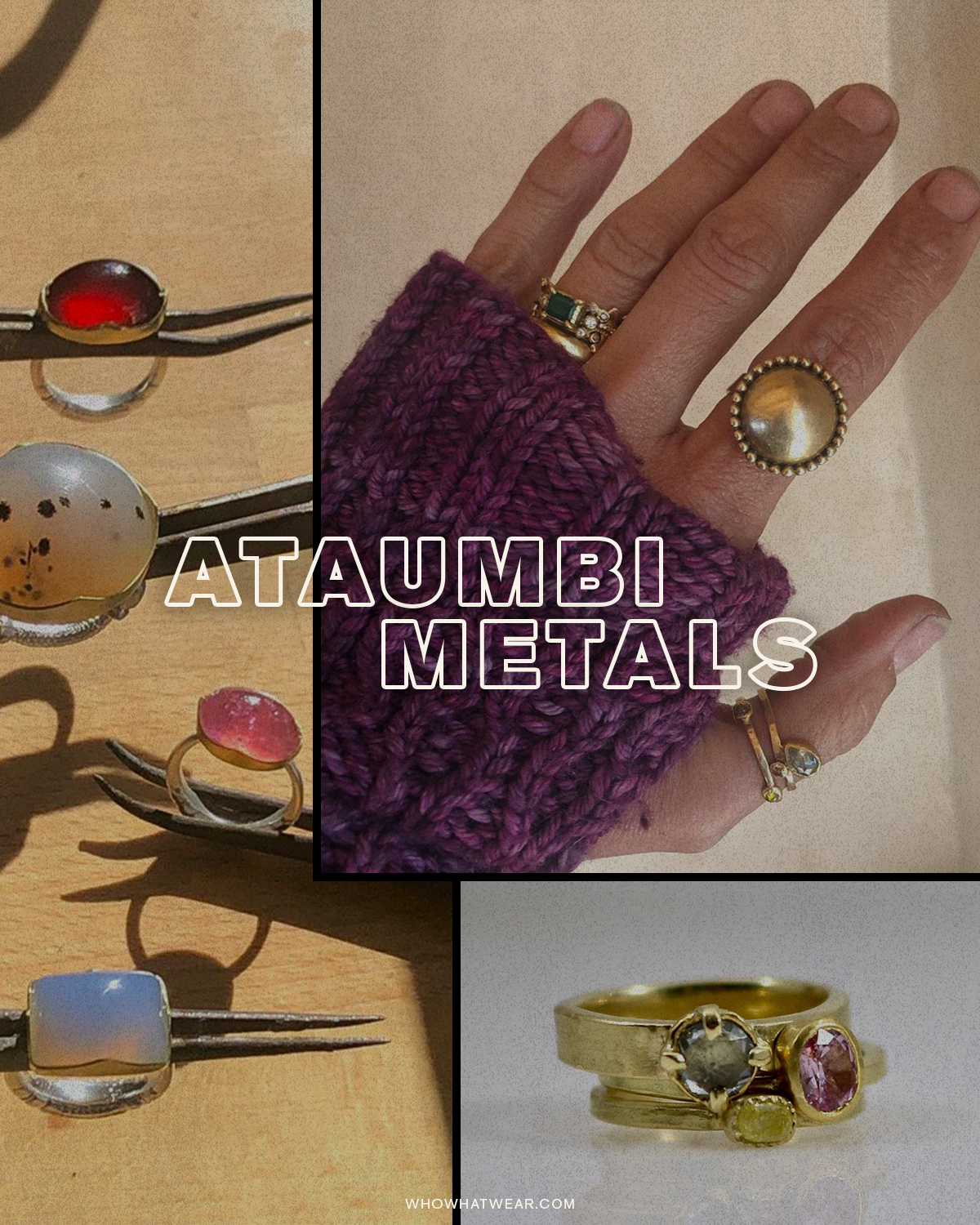
The creations from Ataumbi Metals are truly otherworldly. Designer Keri Ataumbi was raised on the Wind River Reservation in Wyoming and credits her family’s creative background with her passion for jewelry making. "The purpose of jewelry is not just for adornment,” Ataumbi shares on her brand’s website. "There’s information in it, and it changes you when you put it on.”
Acknowledging that much of the jewelry industry relies on mass production, her designs take a decidedly slower approach. Each piece is handmade and uses traditional Kiowa imagery and materials to construct a contemporary narrative that ties in the traditions of Ataumbi’s Indigenous background with a contemporary look and feel of colorful stone rings and sculptural metal necklaces.
Shop:
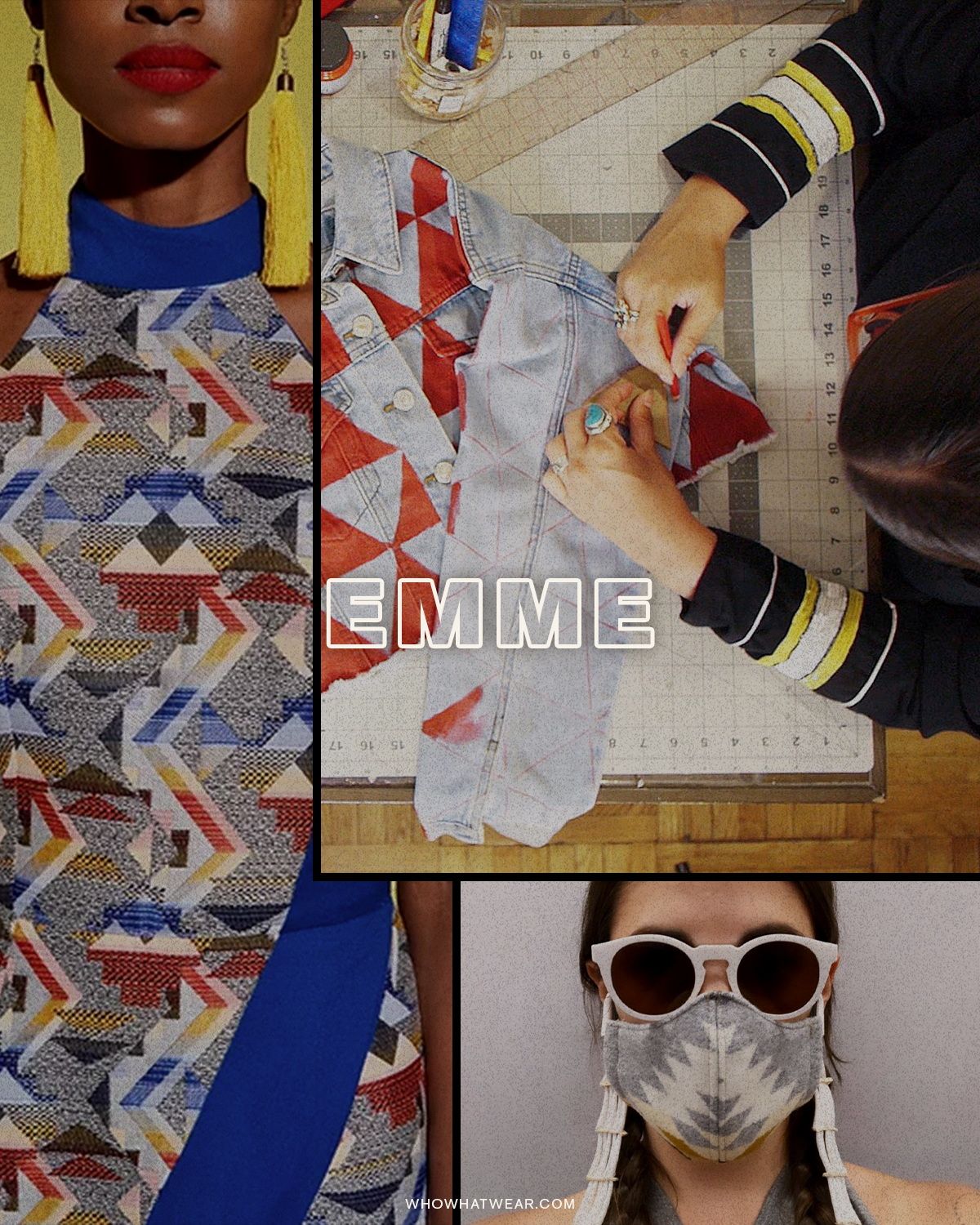
What is your full name, and to which tribe are you affiliated?
Korina Emmerich. I am part of the Puyallup Tribe.
How would you describe your brand to someone who’s not familiar?
I built my Brooklyn-based brand, Emme, on the backbone of expression, art, and culture, leading the charge to embrace art and design as one and weaving it into her brand story. My colorful work is known to reflect my Indigenous heritage, stemming from the Coast Salish Territory, Puyallup Tribe. With a strong focus on social and climate justice, we speak out about industry responsibility and accountability, working actively to expose and dismantle systems of oppression and challenge Colonial ways of thinking.
Items are made-to-order in our Brooklyn, New York, studio located on occupied Canarsie territories. Most items are made from upcycled, recycled, and all-natural materials, giving respect to the life cycle of a garment from creation to biodegradation. Supplies are limited.
What influenced you to start your brand?
I am blessed to come from a really creative family. My father was an art teacher while I was growing up, and I knew from a young age I wanted to be an artist, but I was still exploring what my medium would be.
The glamour of the ’90s designers still resonates with me, watching the art-driven fashion from some of the greats. I plastered my walls with images of McQueen, Versace, Gucci, etc. I wanted so badly to be a part of that world, to leave myself behind and mold into this glamorous lifestyle that seemed beyond unattainable for a child like me.
The first fully completed garment I made was my jingle dress regalia in the ninth grade. The jingle dress, also known as the healing dress or prayer dress, is composed of a colorful foundation with rolled tobacco lids that create jingles. When you dance, each jingle has a dedicated prayer associated with it, and the sound of the jingles releases the prayers. It was during the creation of this regalia that I knew I wanted fashion to be my medium.
Emme was born out of a desire to create an elevated visual representation of my multitude of inspirations combining my Indigenous and contemporary art influences while keeping the brand focused on ethics and sustainability.
The principal statement I keep at the forefront of Emme is "The success of one is not worth the detriment of many.”
Has your Indigenous background influenced your approach to design? If so, how?
I believe Indigenous designers are innately sustainable because we were raised to have a stronger connection to the Earth and what it provides. I’ve always been taught not to take more than you need, to always consider future generations with every action or inaction you take. We have an understanding of the Earth’s ecology, coexistence, and dependence of all living things, summed up in the term "all my relations.” Recognizing the principles of equality, harmony, and unity, we inherently created the idea of "no waste” in common traditional practices like hunting and fishing, using every part of an animal to provide food, clothing, tools, etc. Everything the Earth provides is received with the utmost respect and gratitude.
How do you hope your brand gives back to your community?
During this time, Emme has been matching donations for communities in need as well as working to allocate masks and PPE to elders and community members.
I myself work within the Indigenous Kinship Collective, a community of Indigenous women, femmes, and gender nonconforming folx who gather on occupied Lenapehoking (NYC) to honor each other and our relatives through art, activism, education, and representation.
We work to support our communities through mutual aid initiatives, fund allocation, direct action, and distribution of goods.
Shop:
This post was originally published at an earlier date. Since our support for the Native American community is forever, we thought we'd update this story and any sold-out products to make it easier to support the cause.

Judith Jones is the associate shopping director at Who What Wear and has worked in fashion for over a decade. She specializes in shopping content and trend stories with high-affiliate impact. She shares the coolest, most desirable fashion market finds and brands for every budget. Previous to working in fashion, Judith worked as a TV host on the PBS travel show Globe Trekker (airing on Netflix and Amazon Prime) sharing her passion for travel and culture.
- Anna LaPlacaSenior Editor
